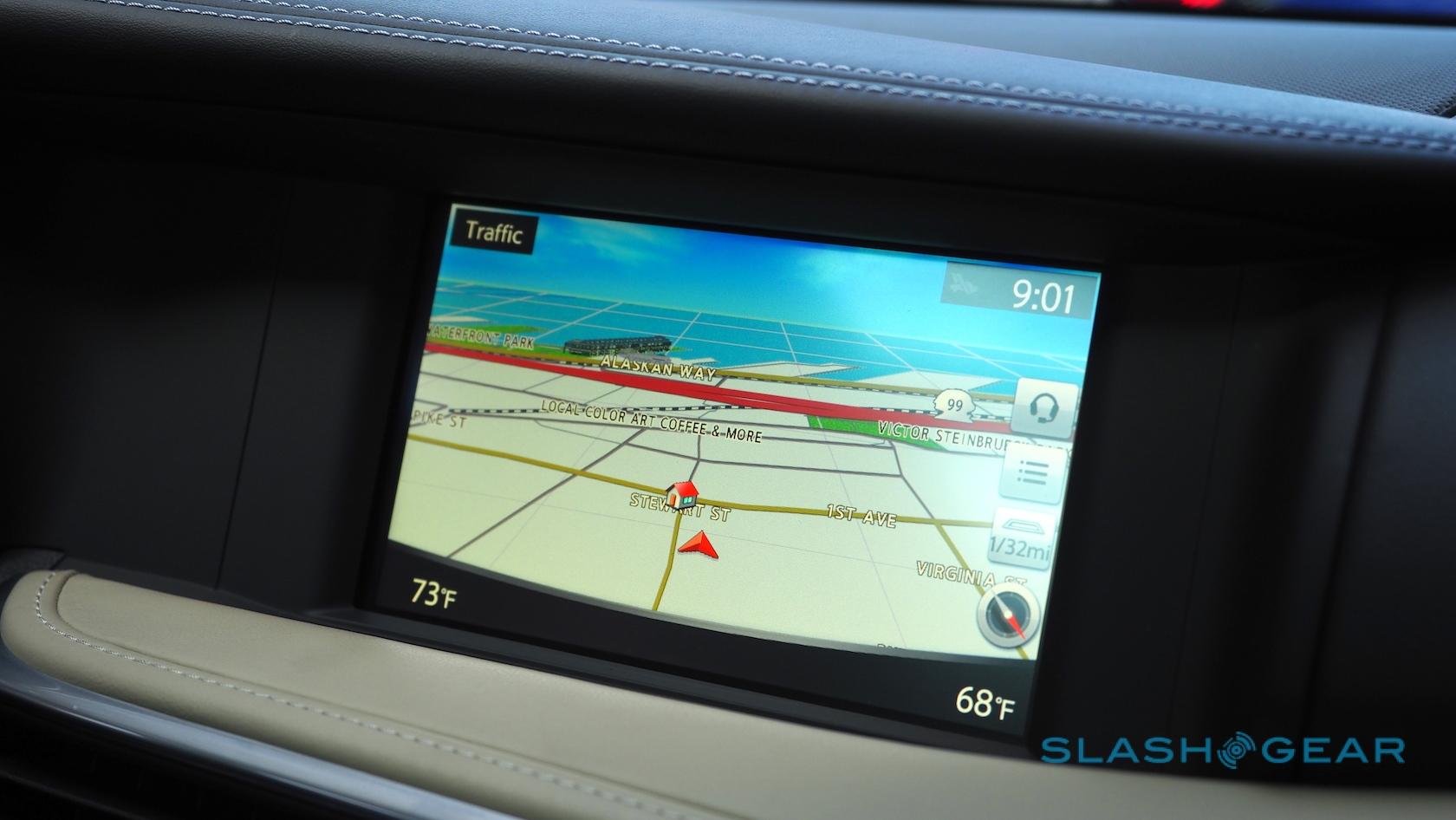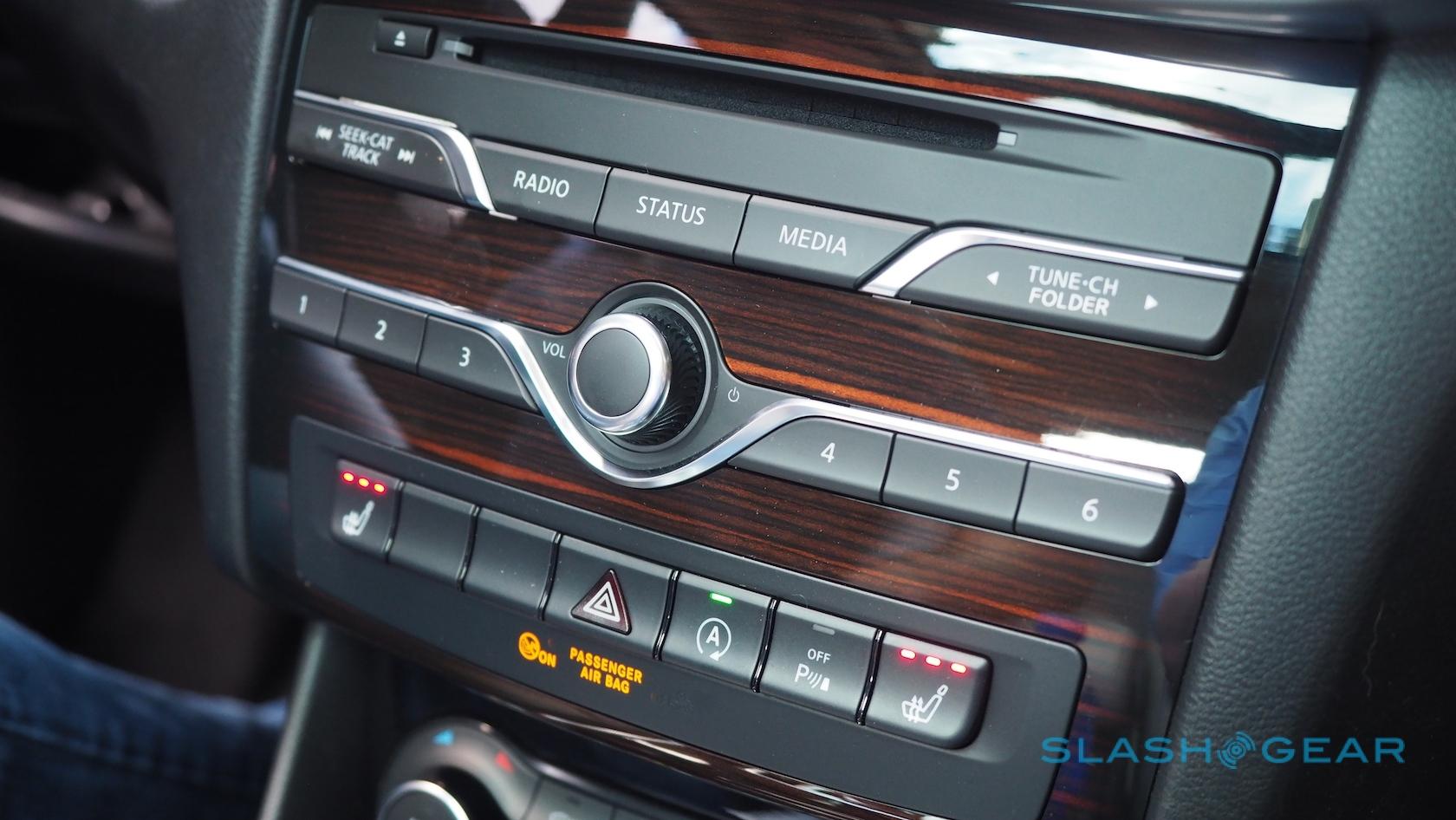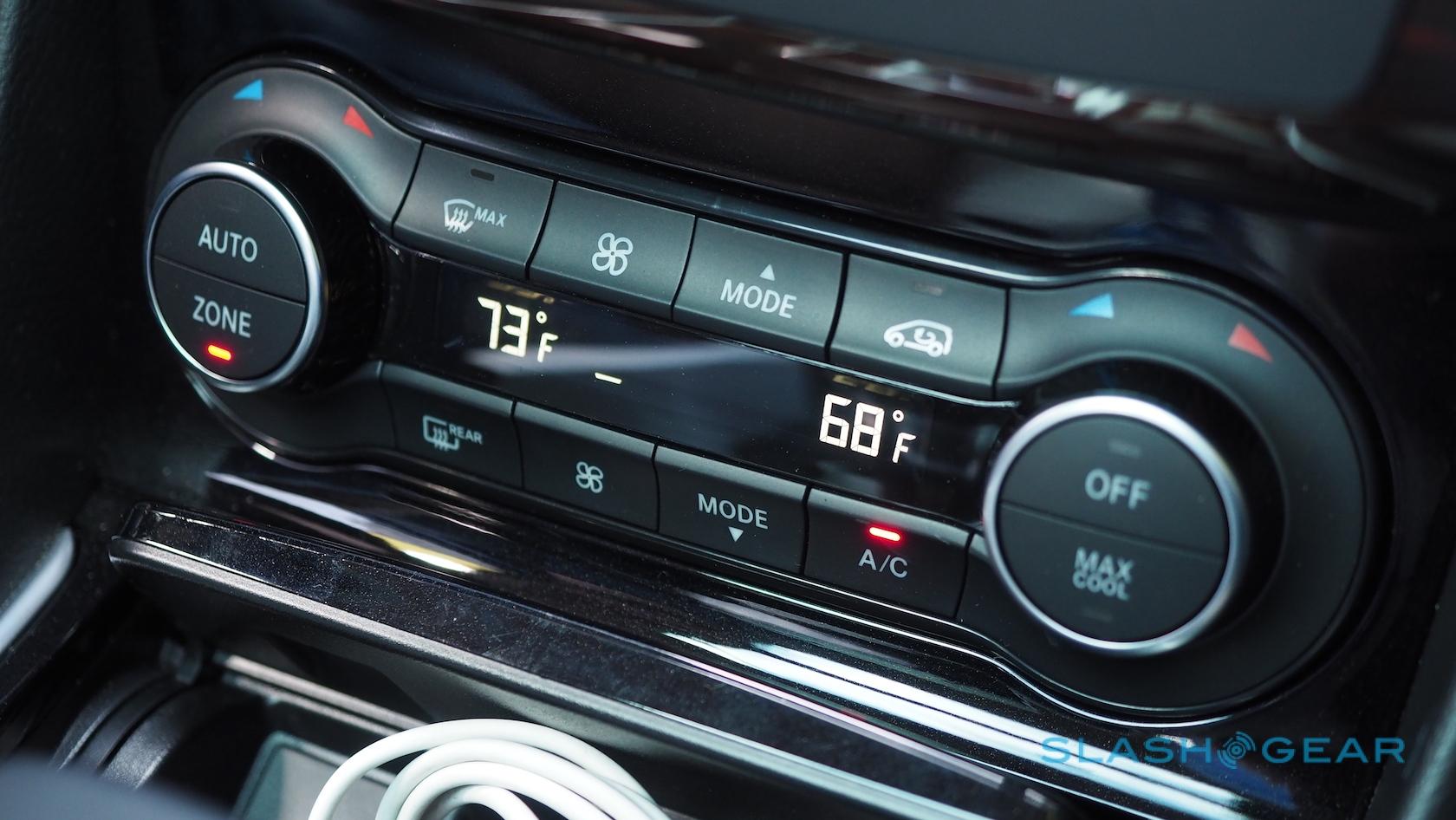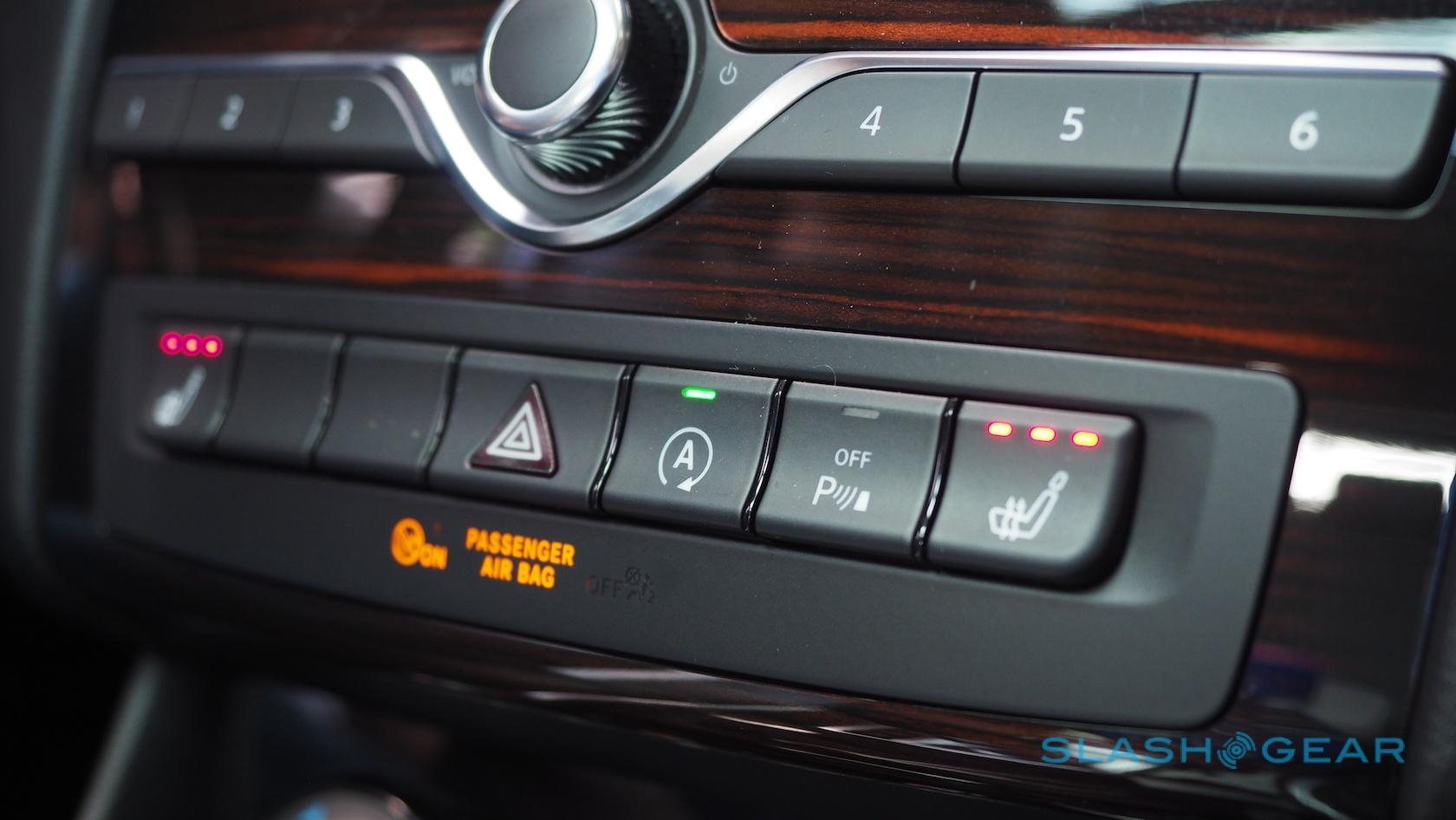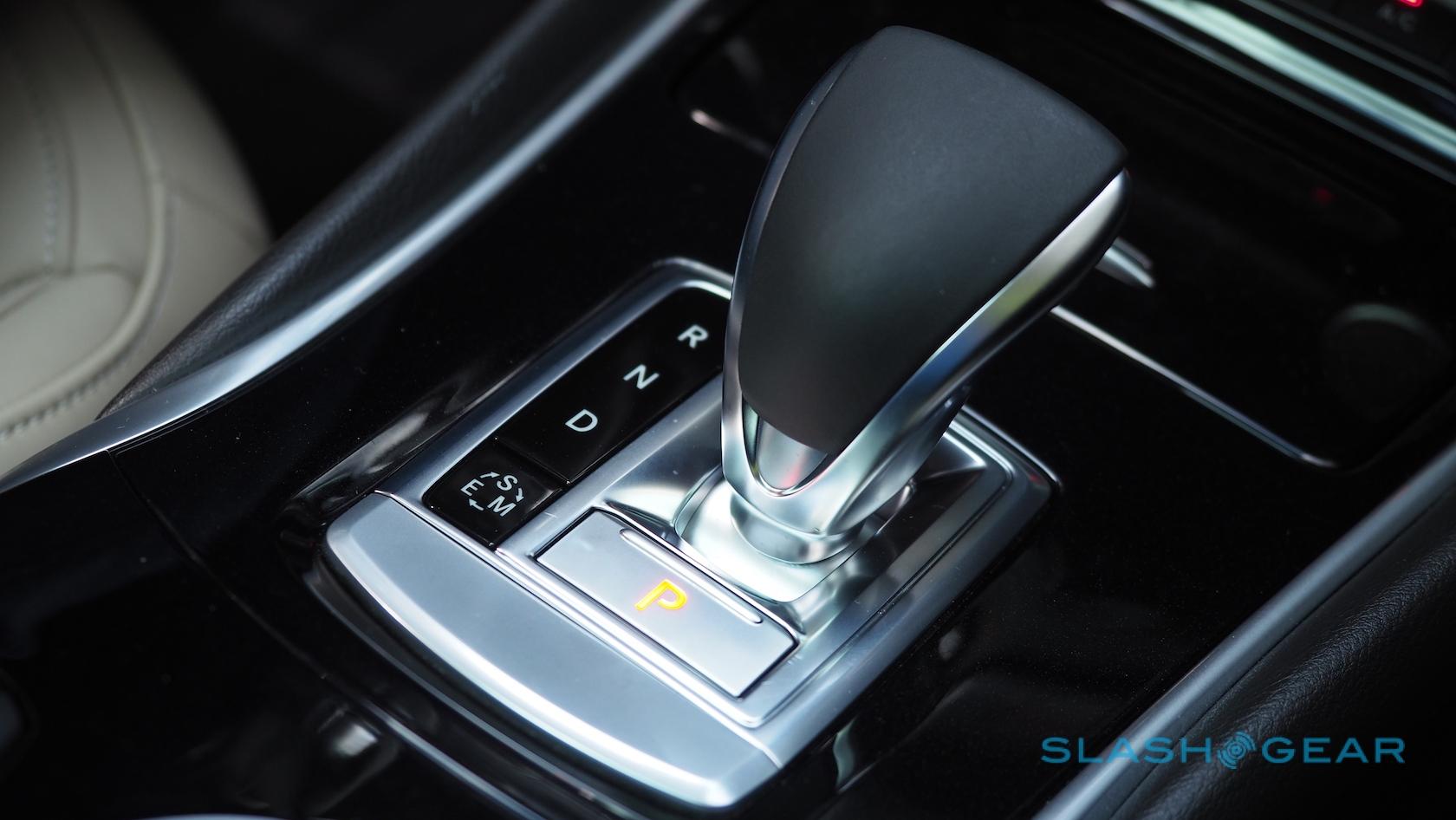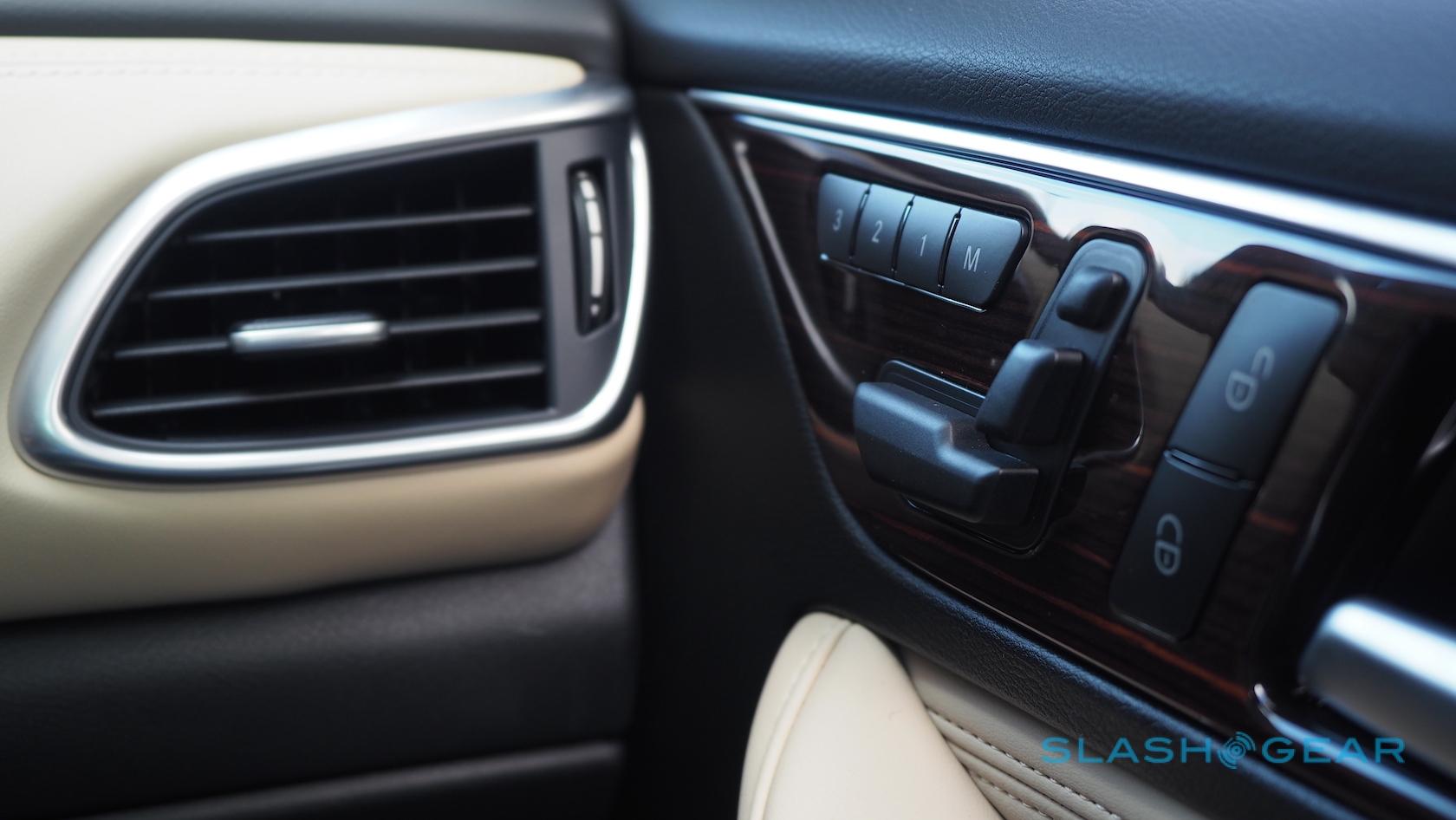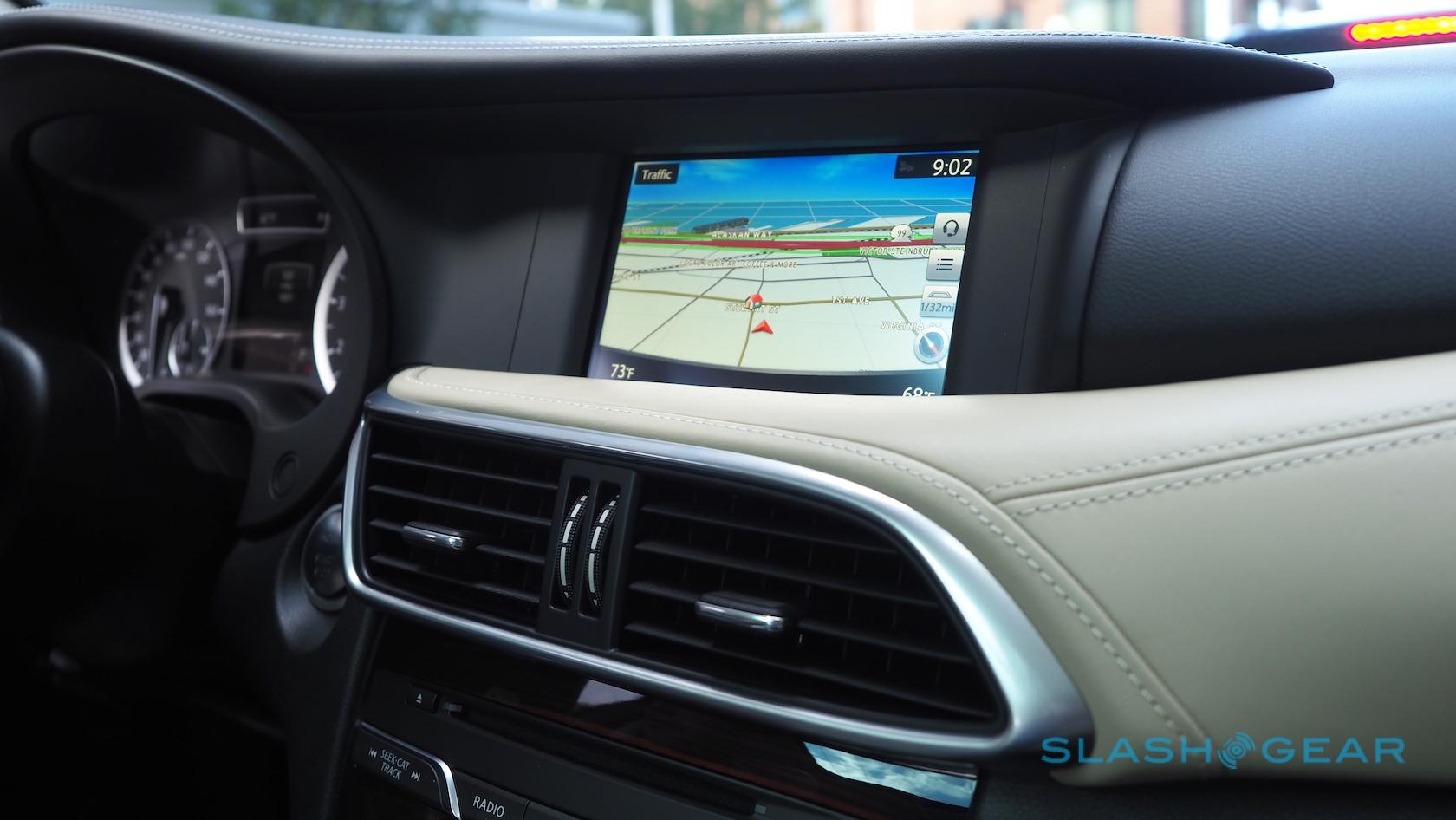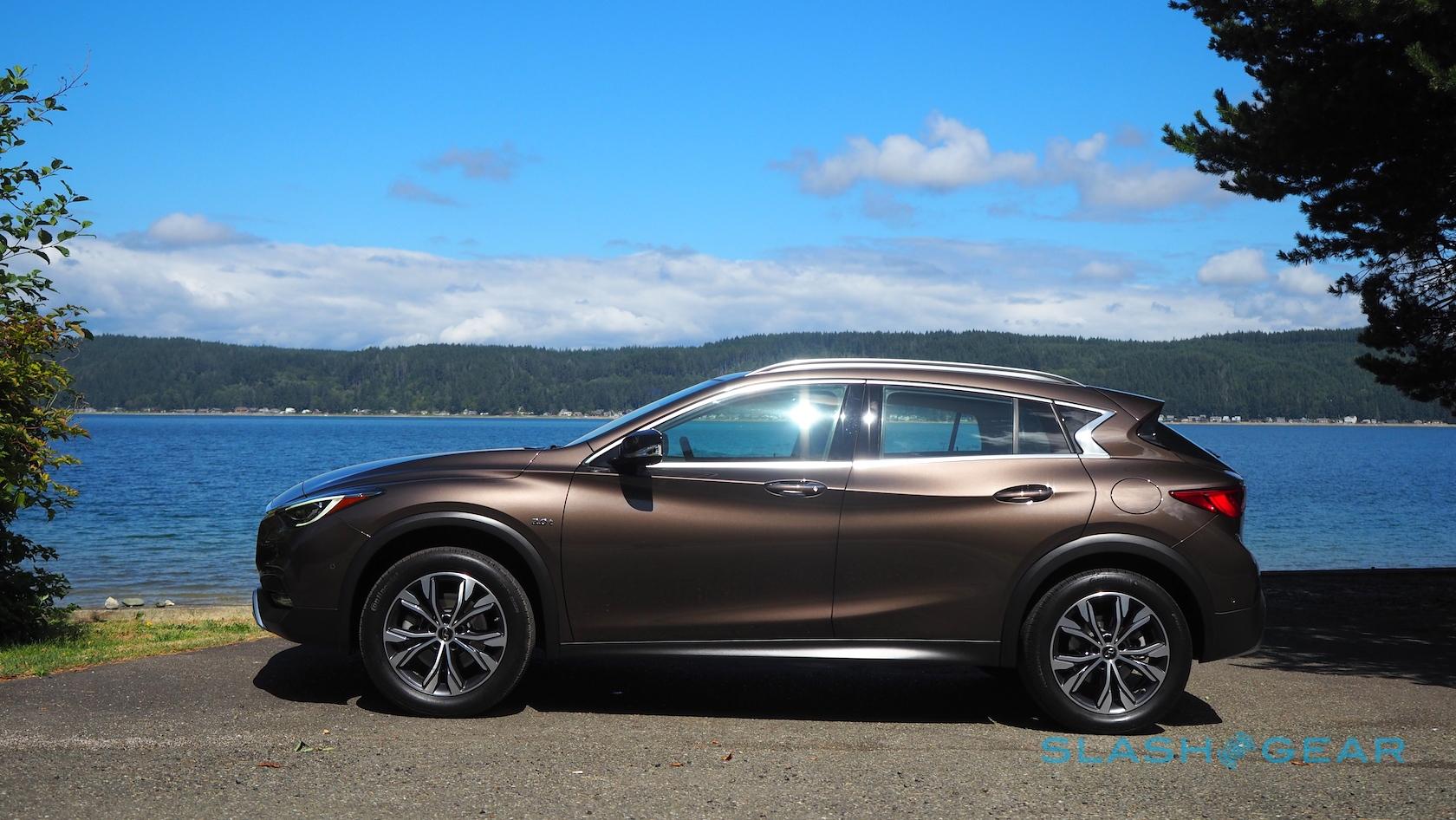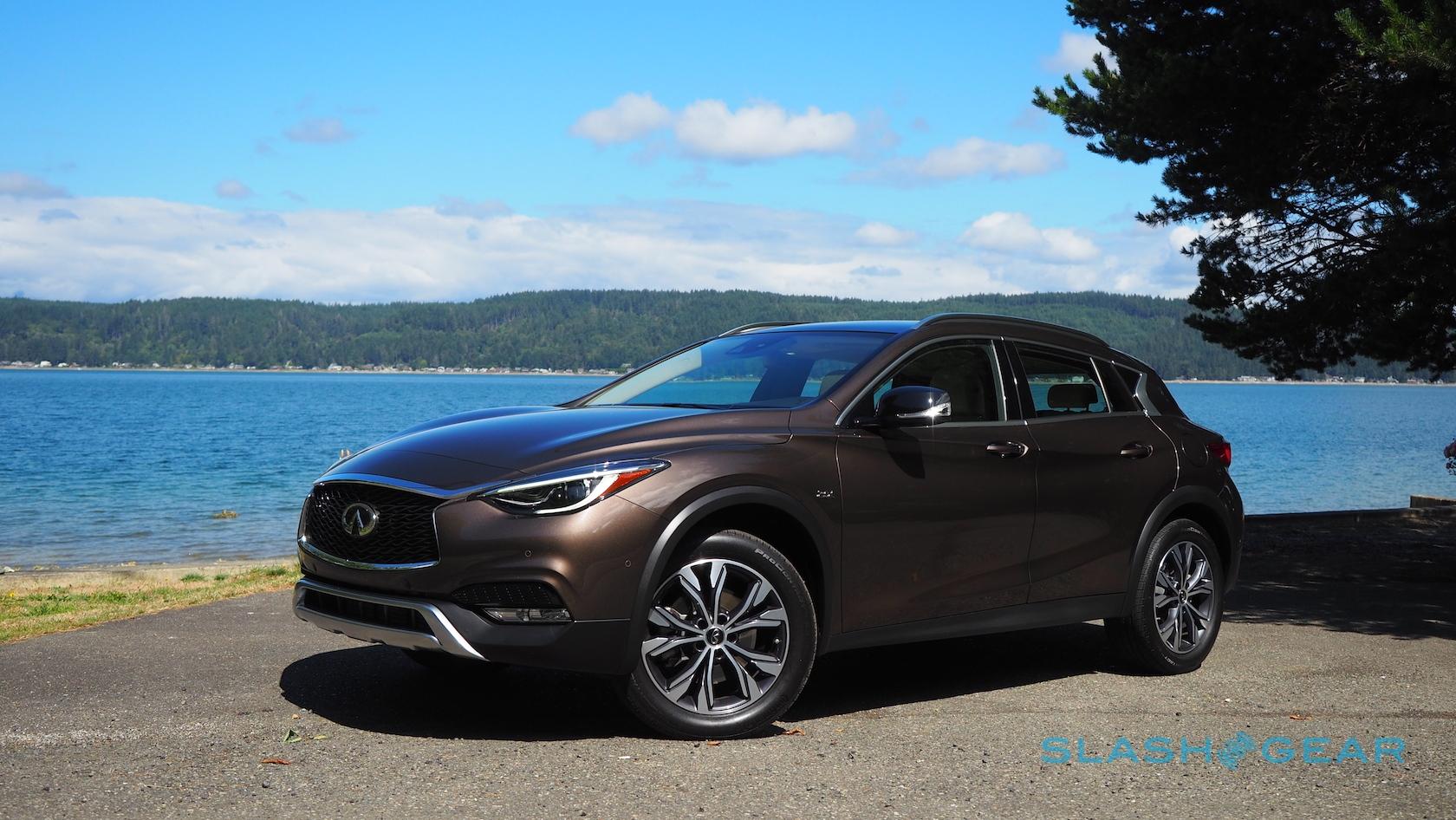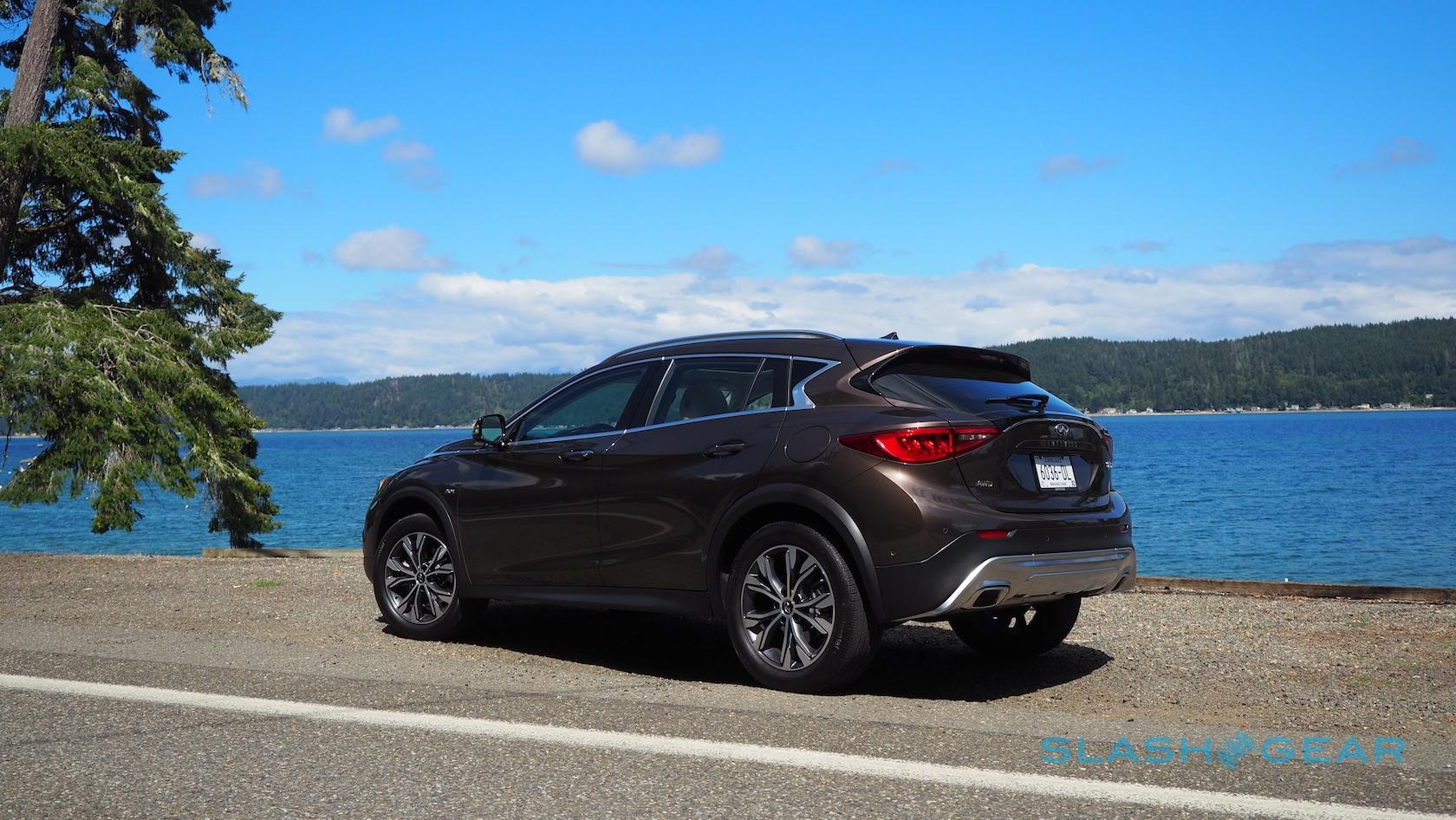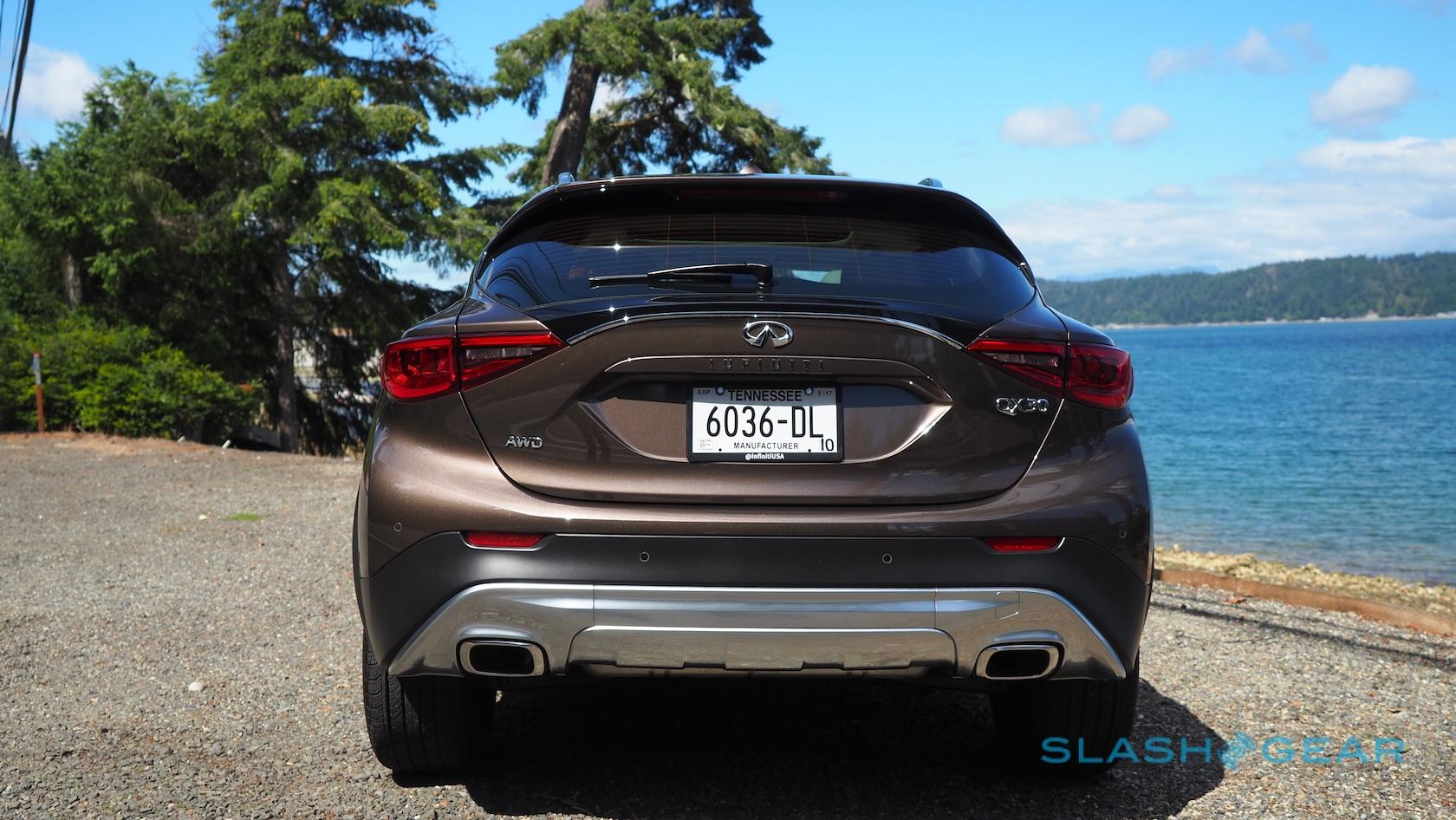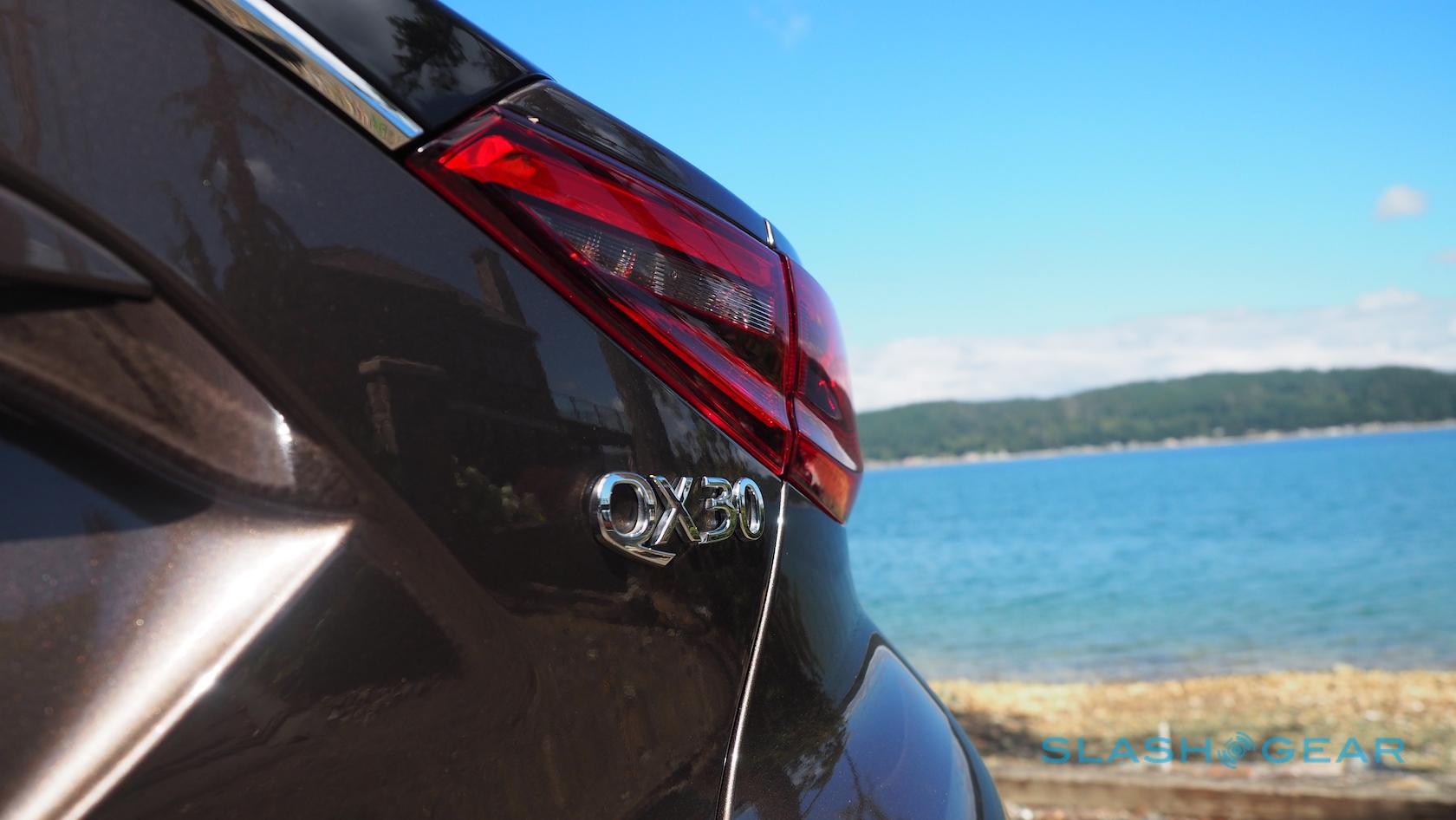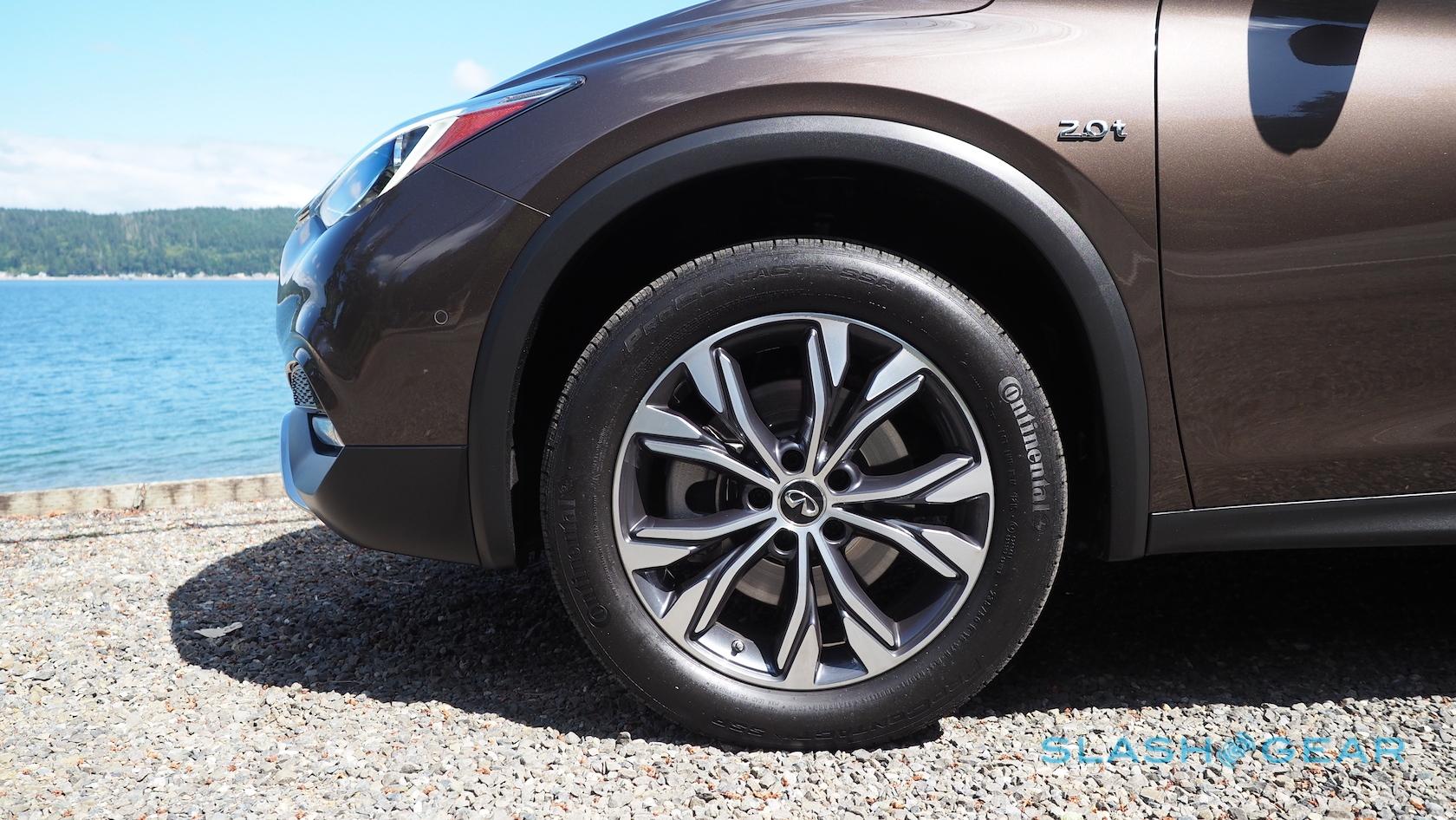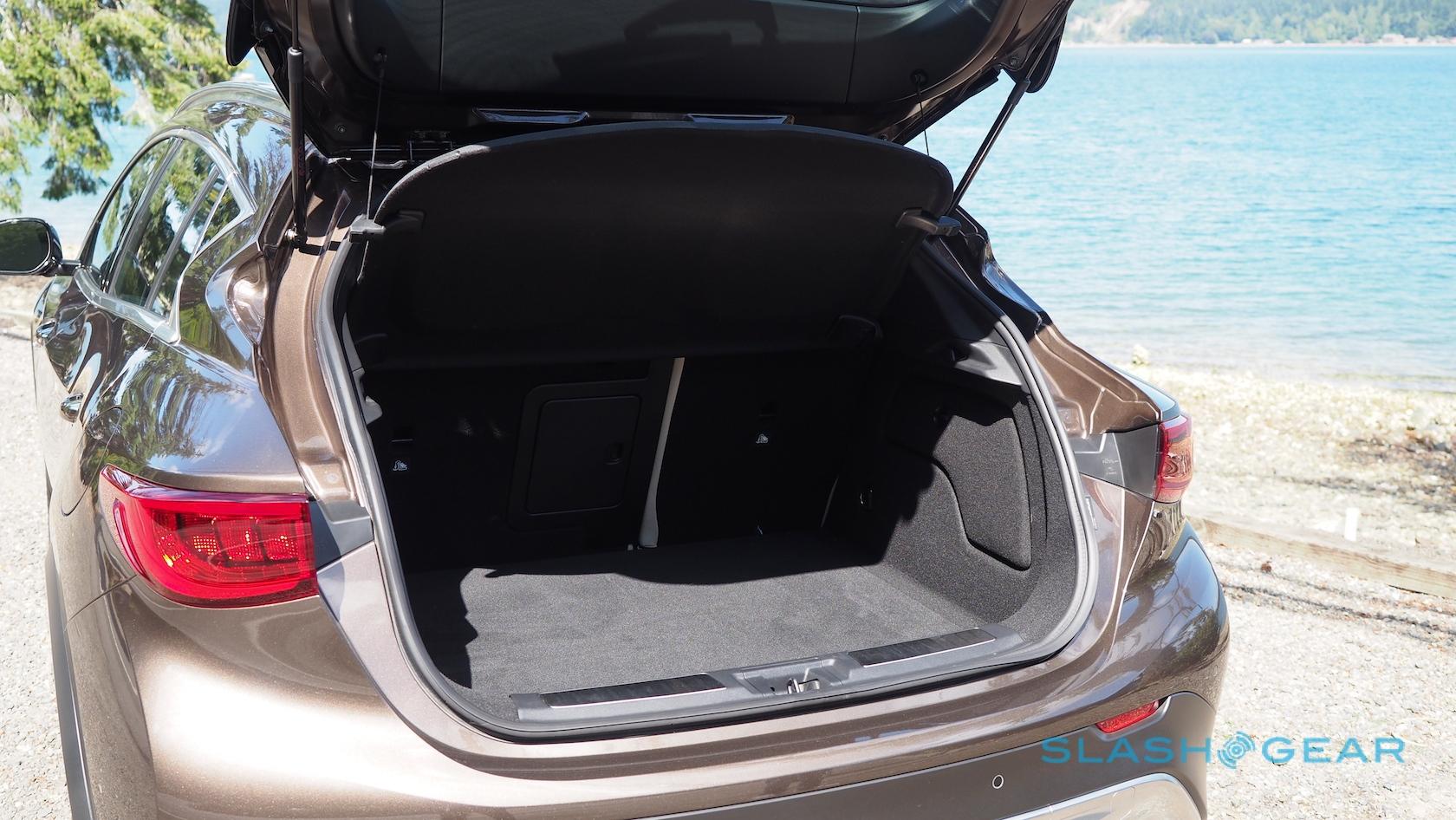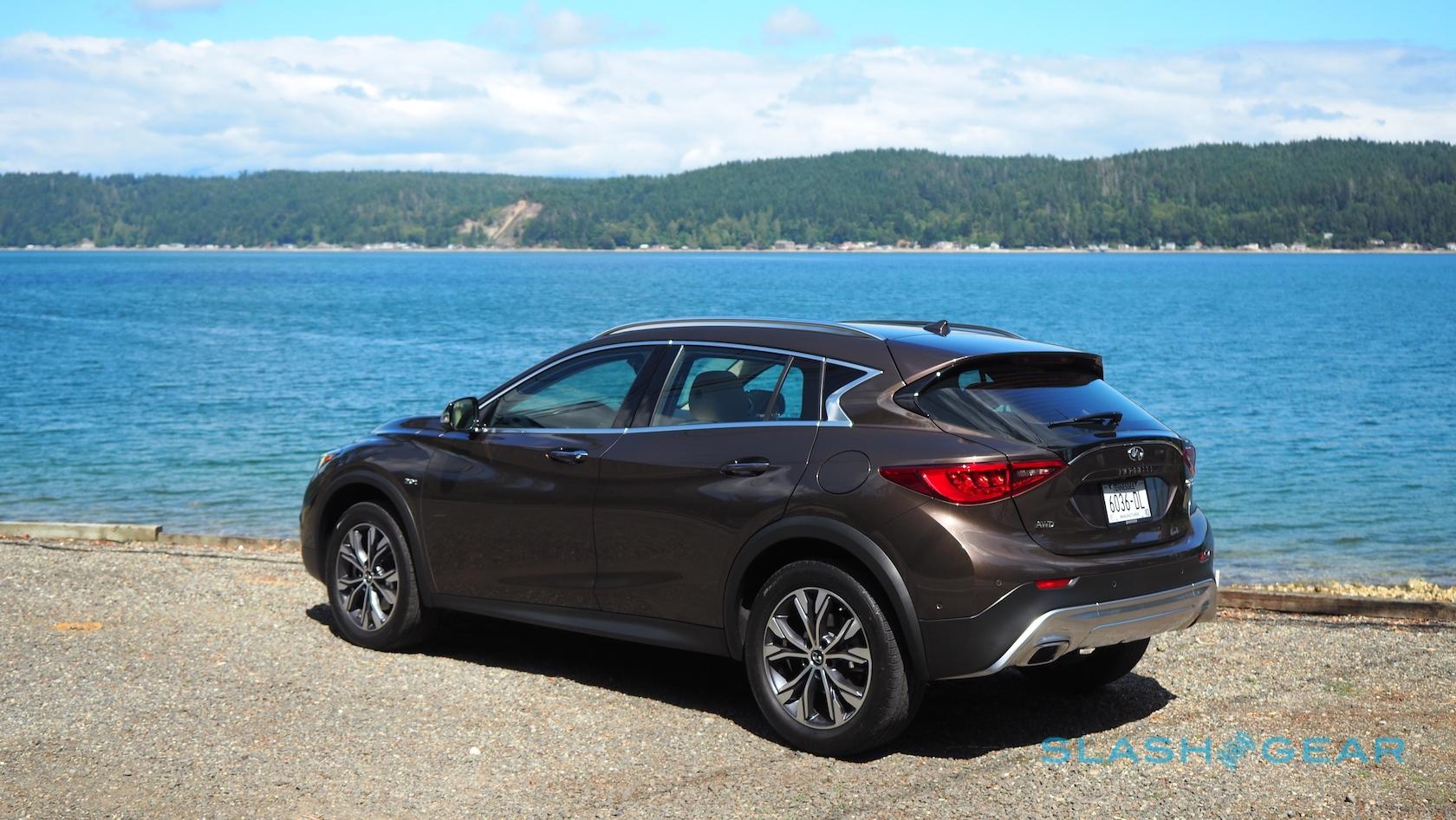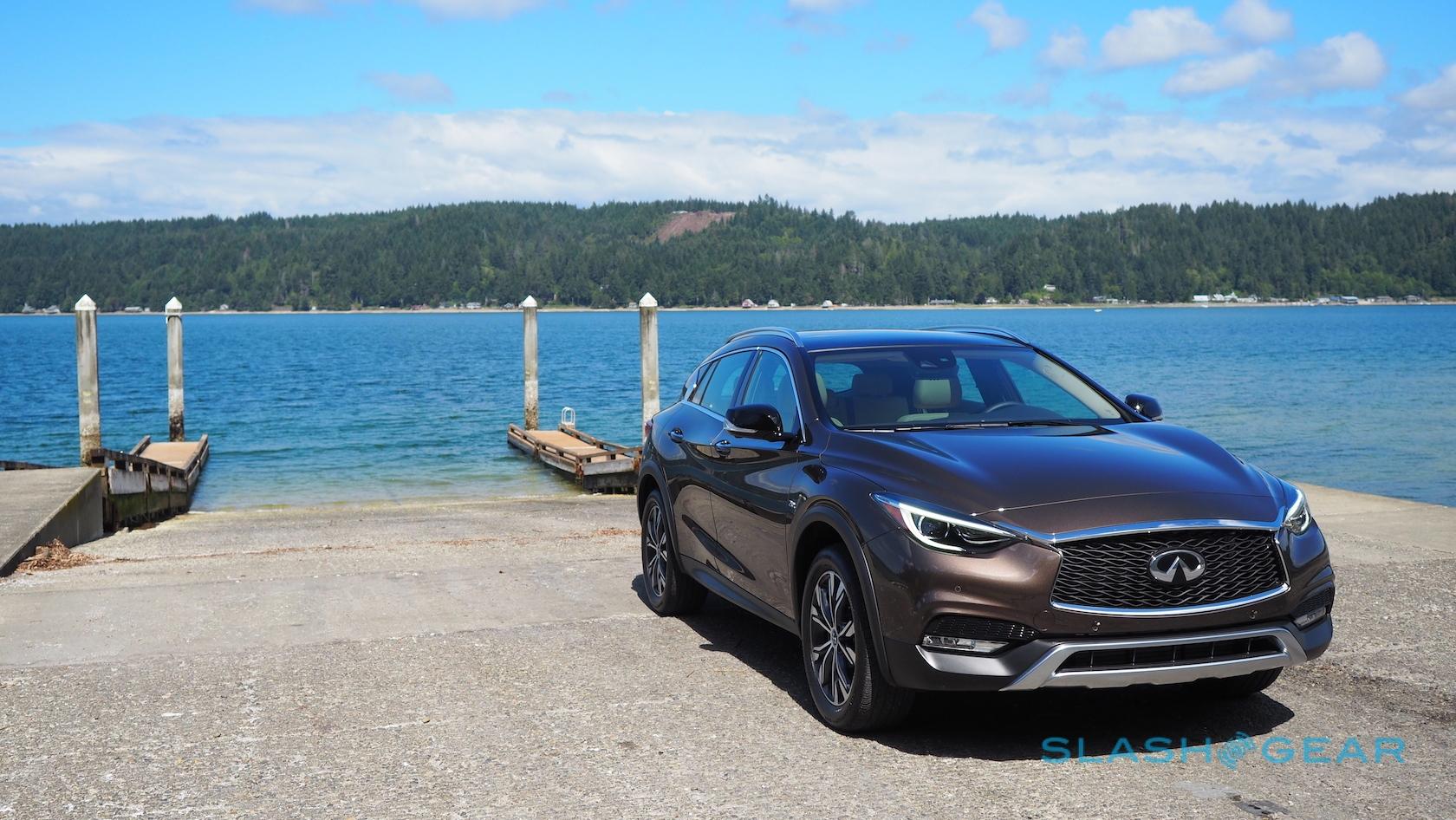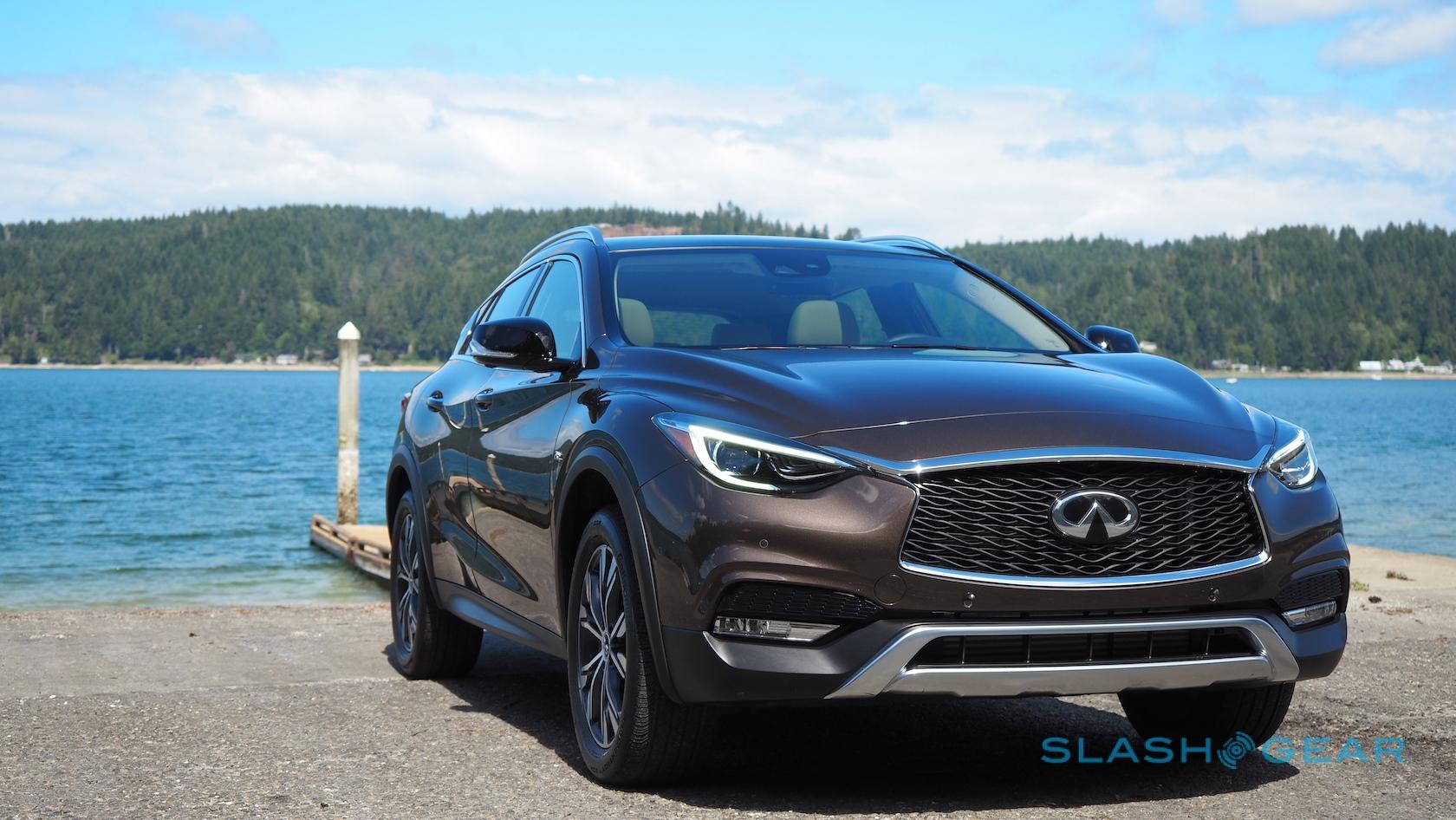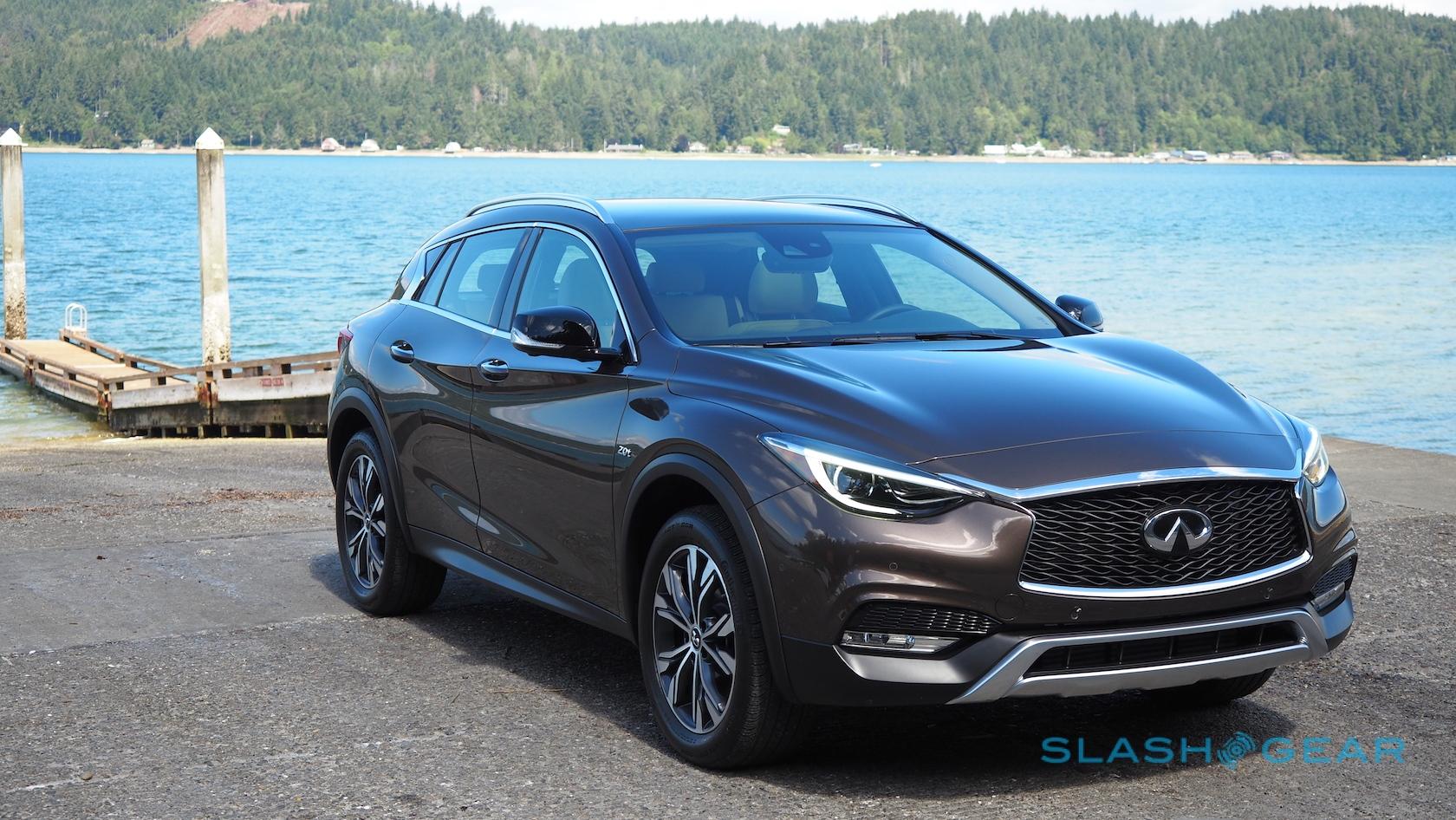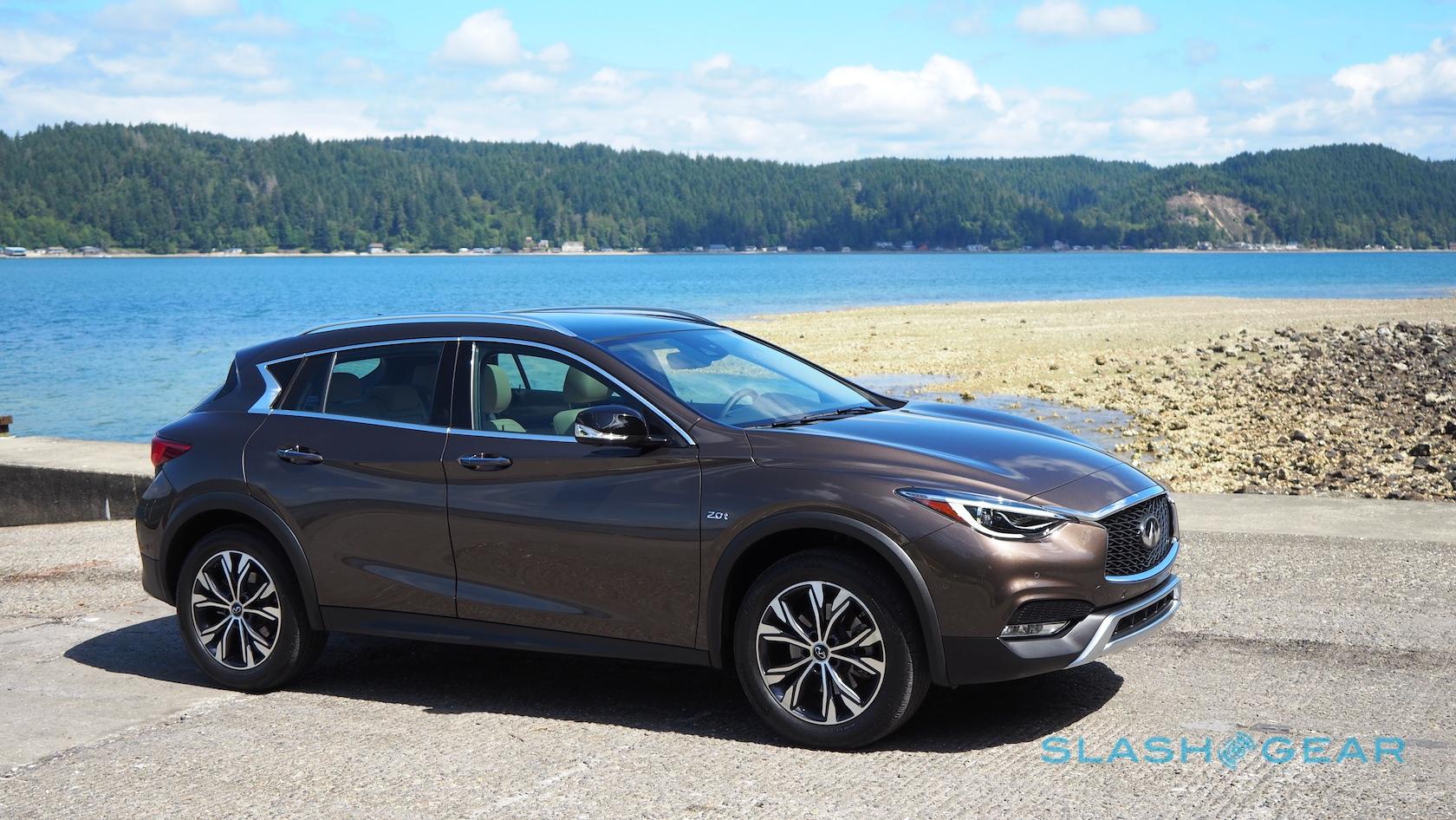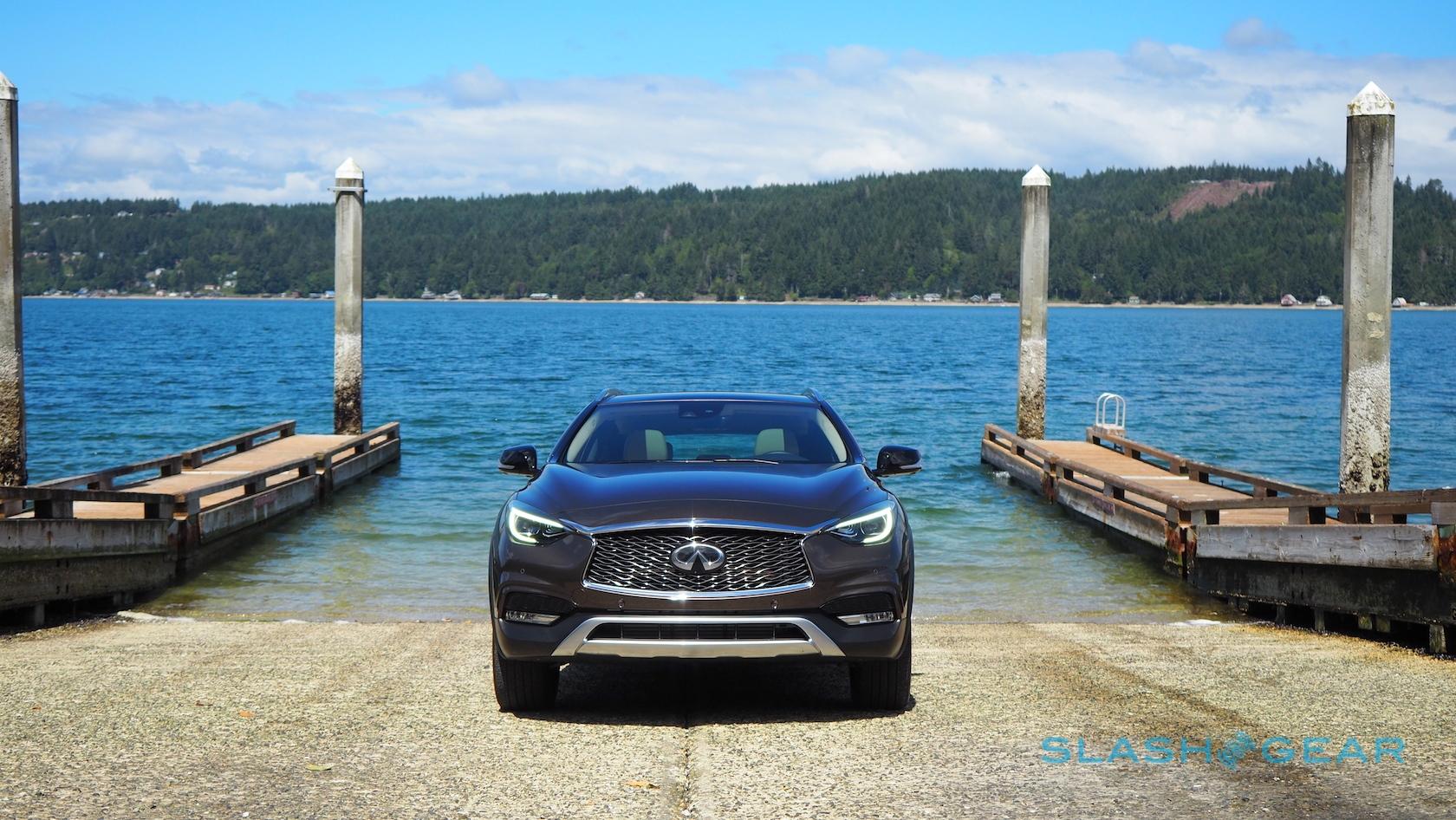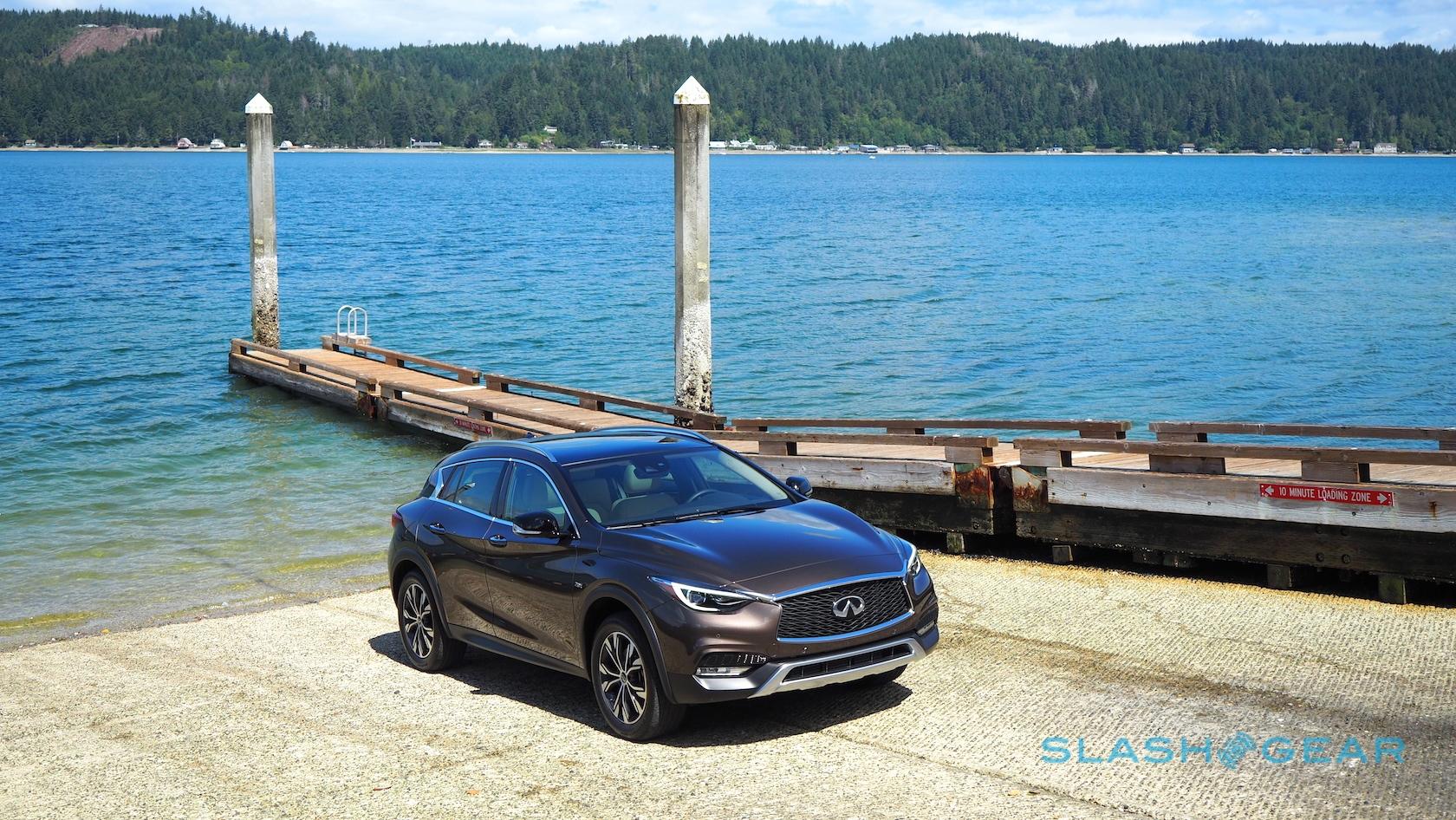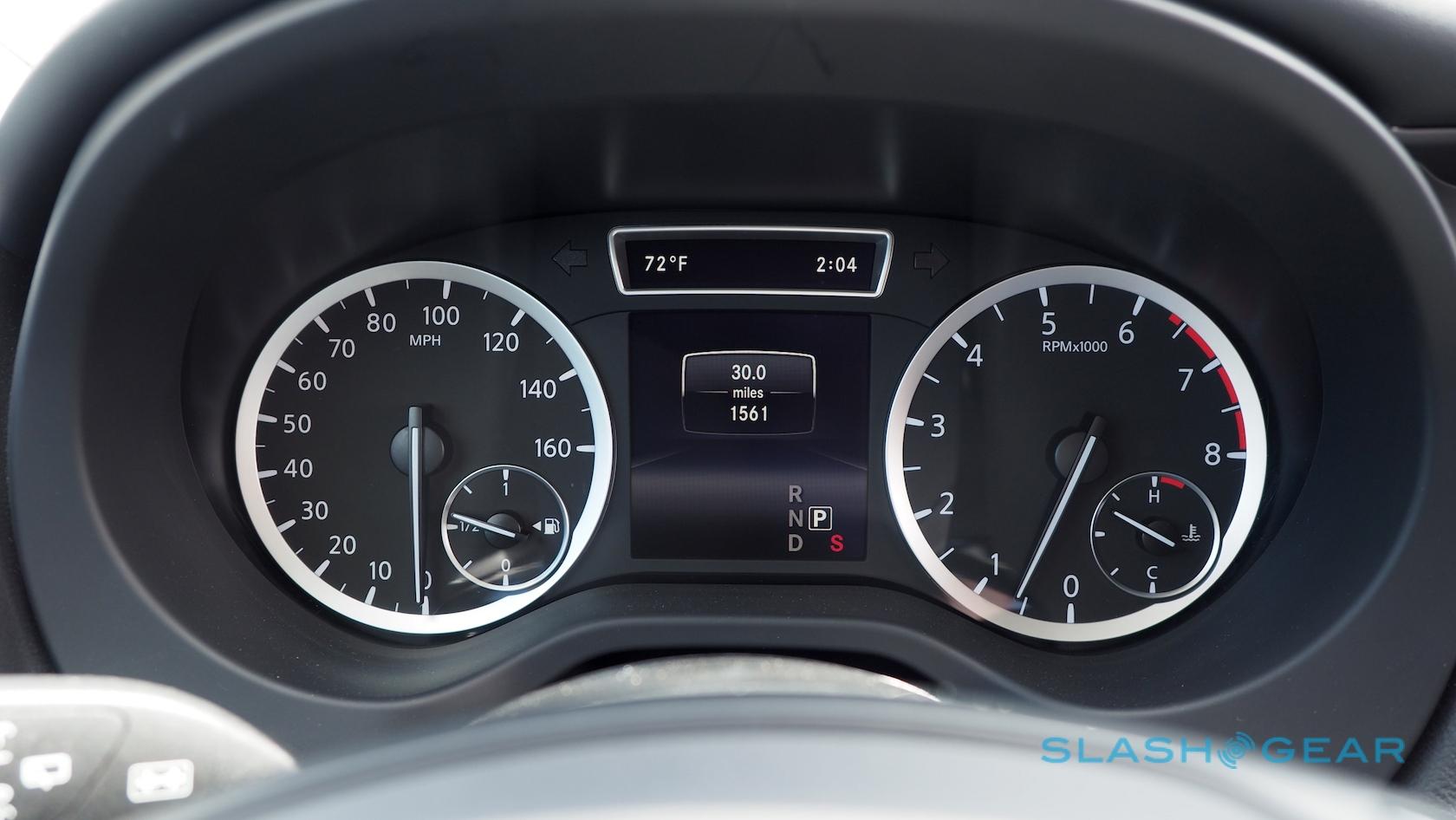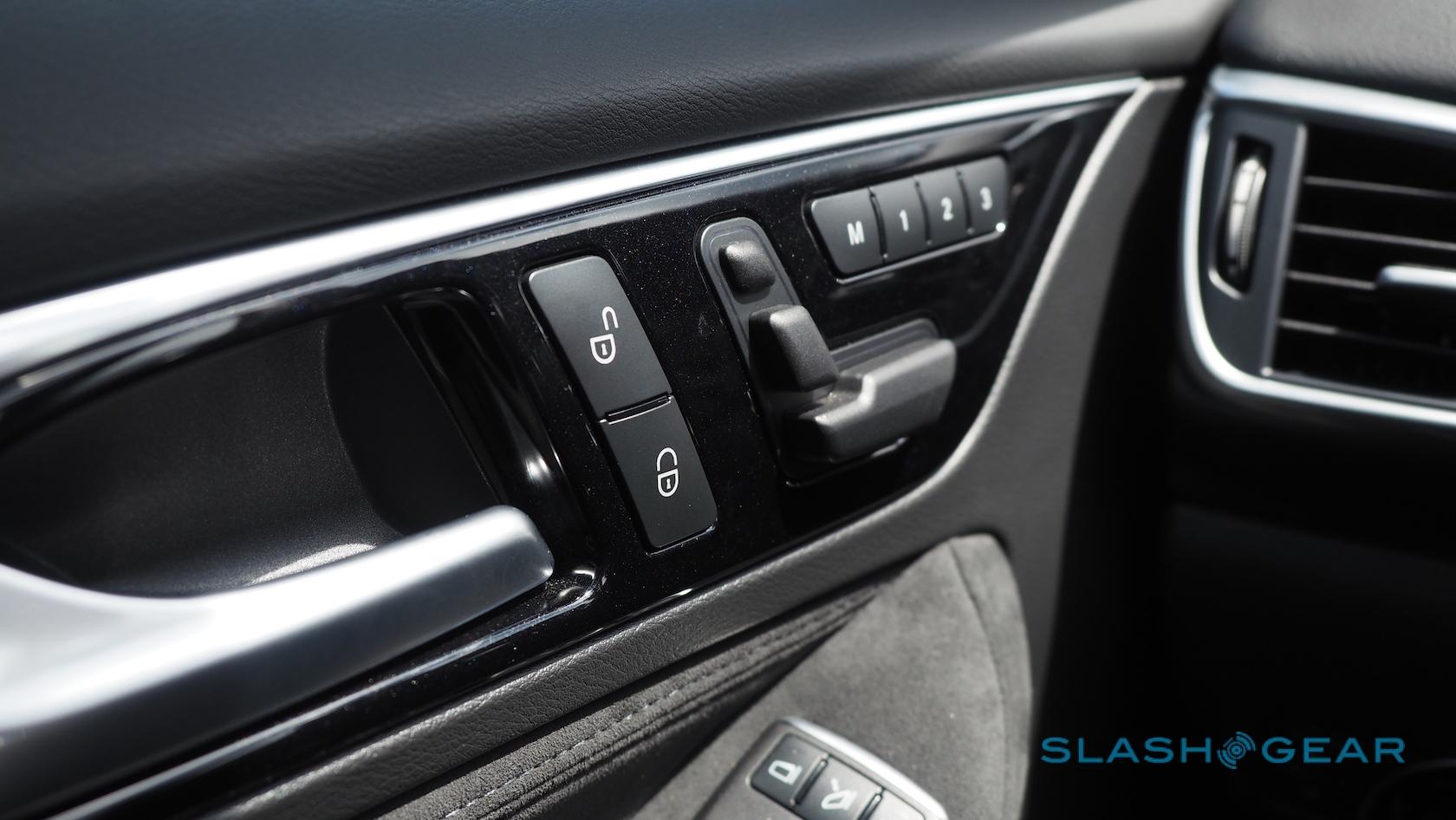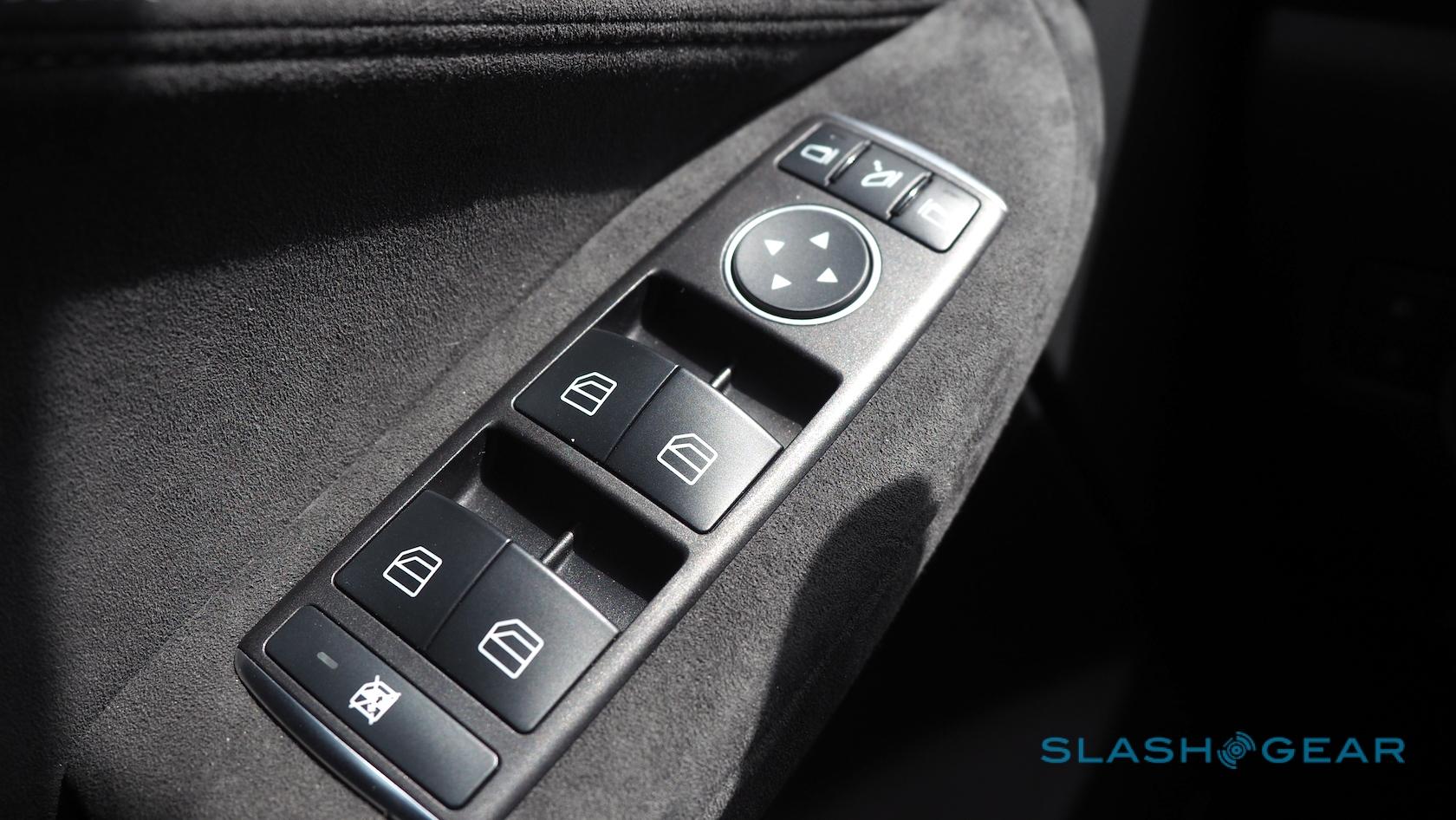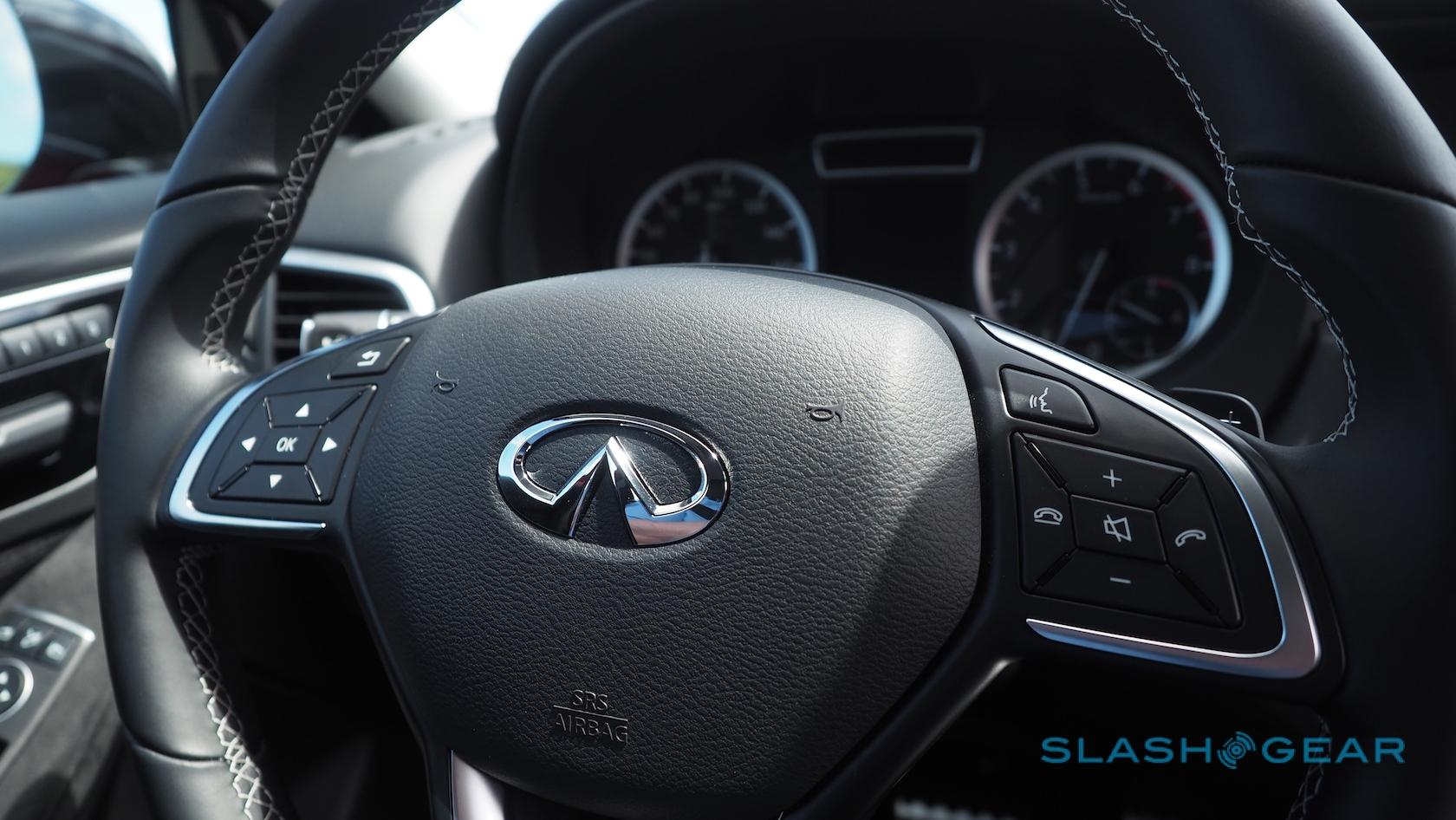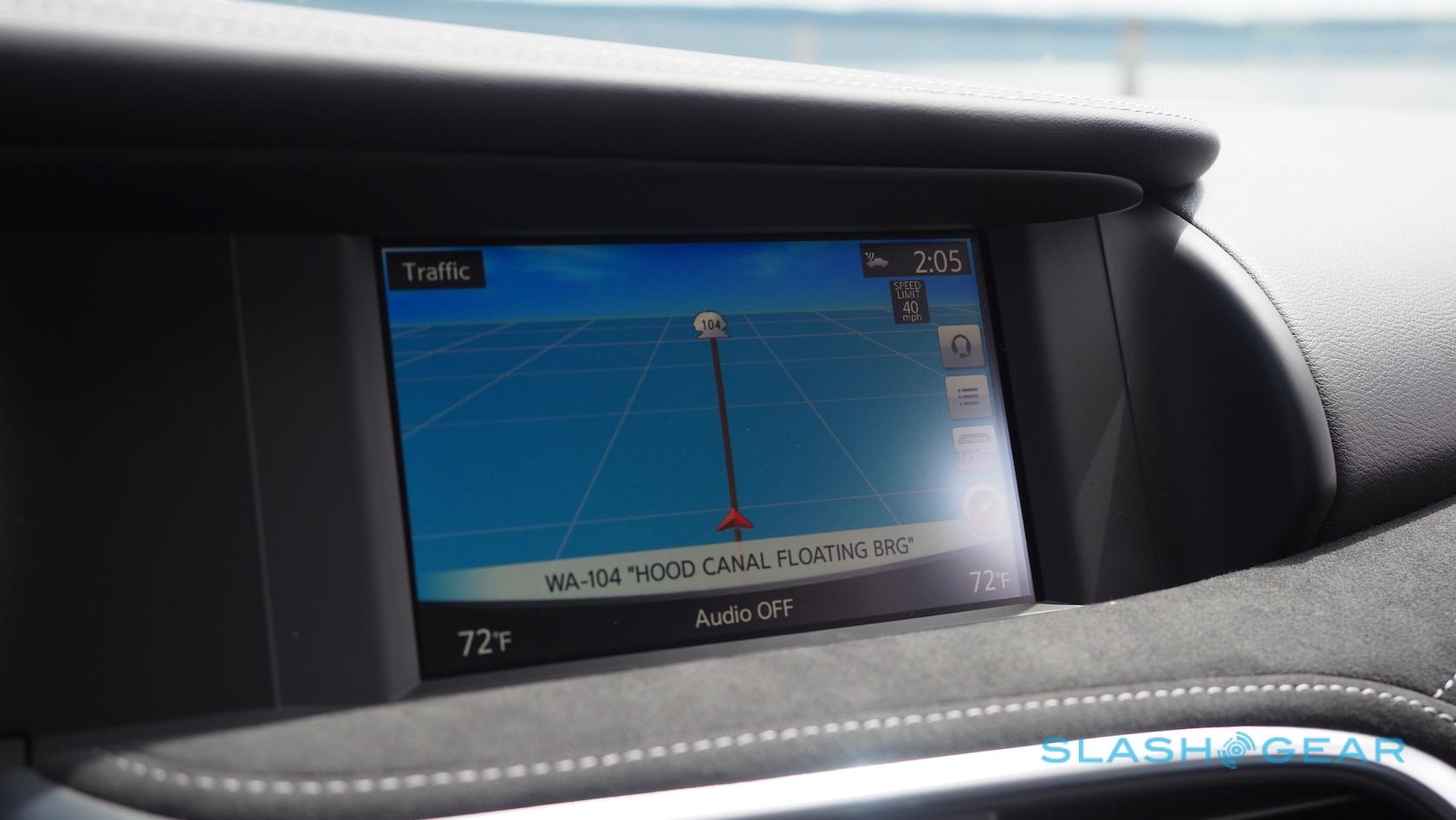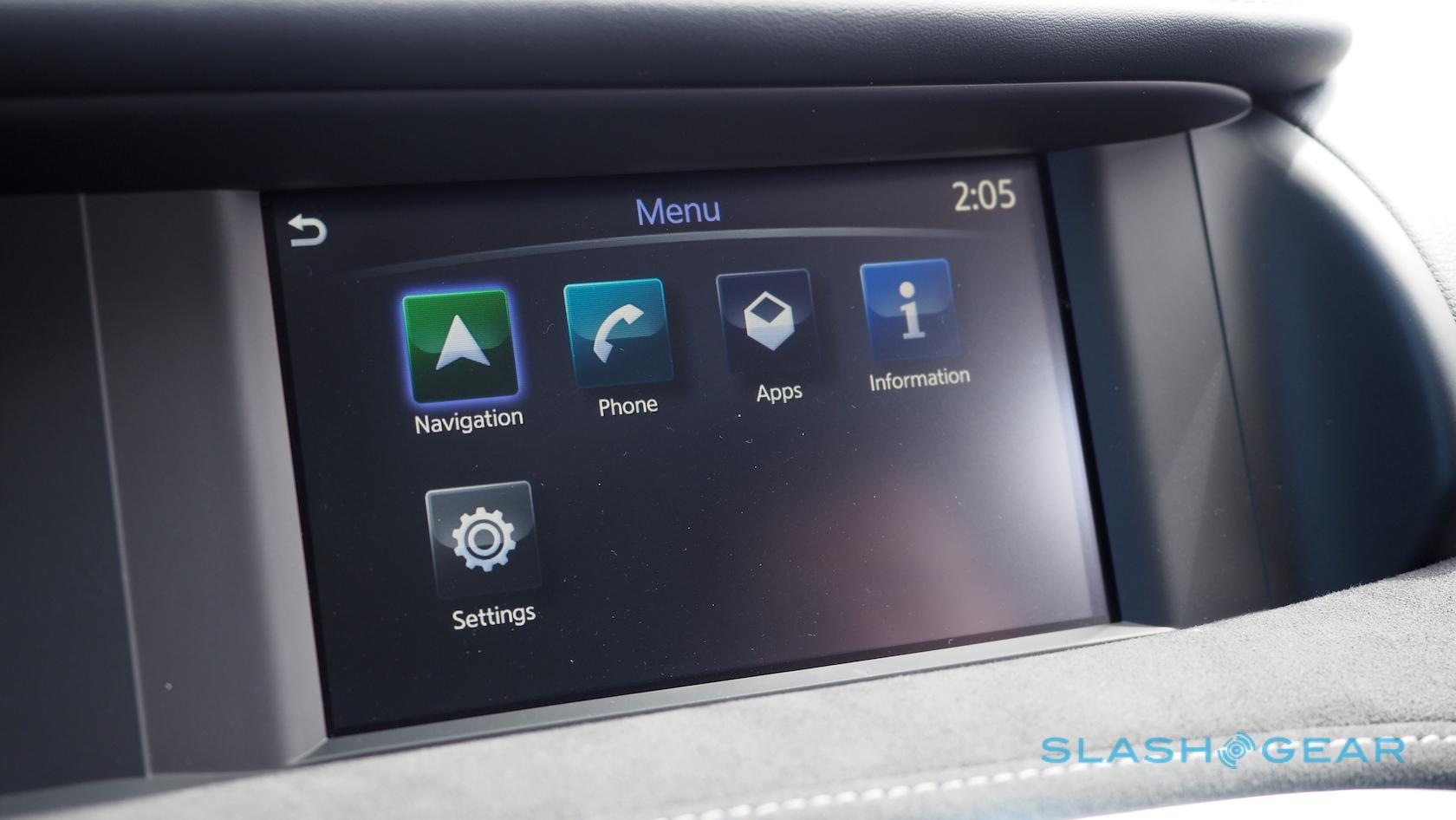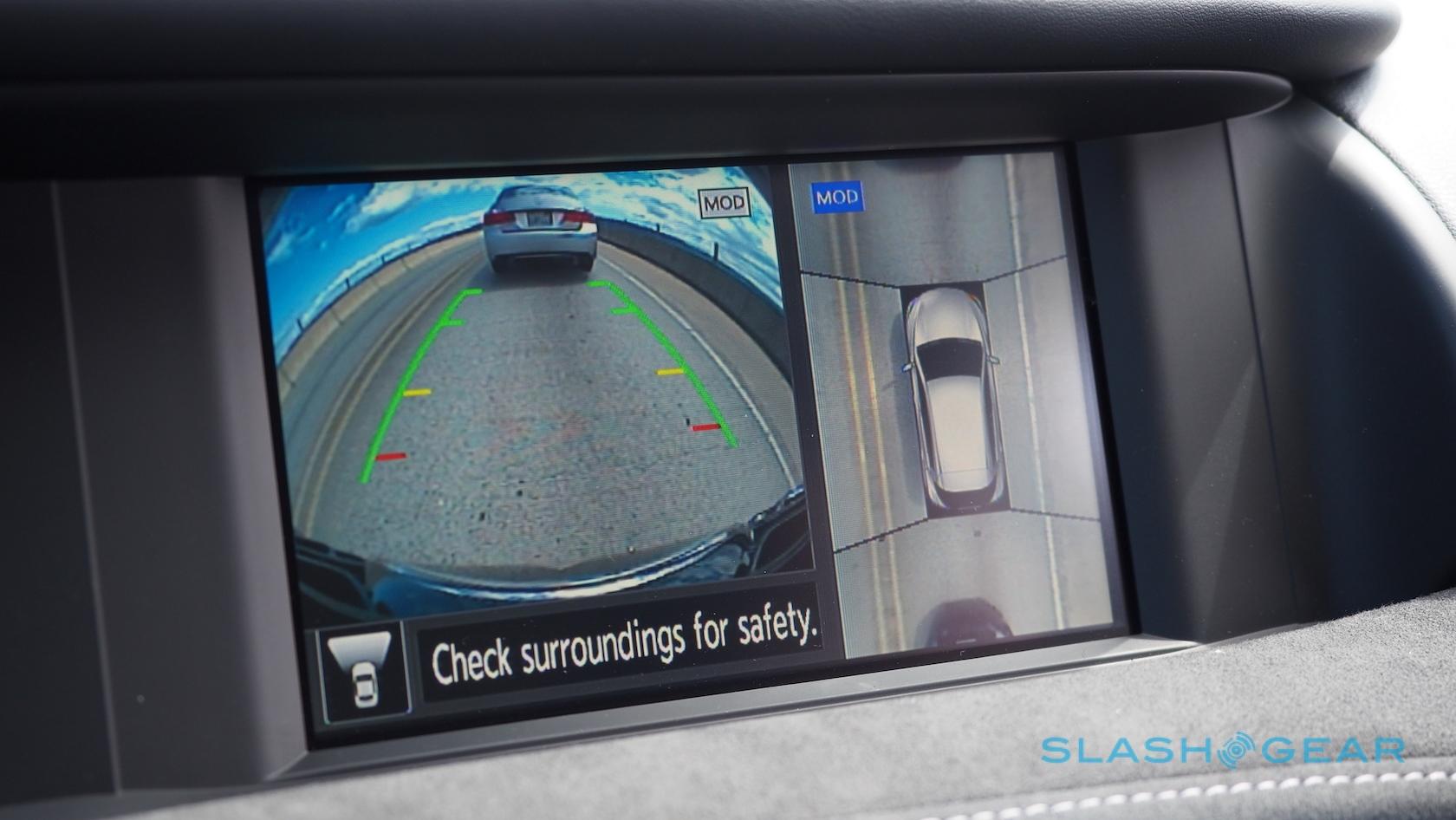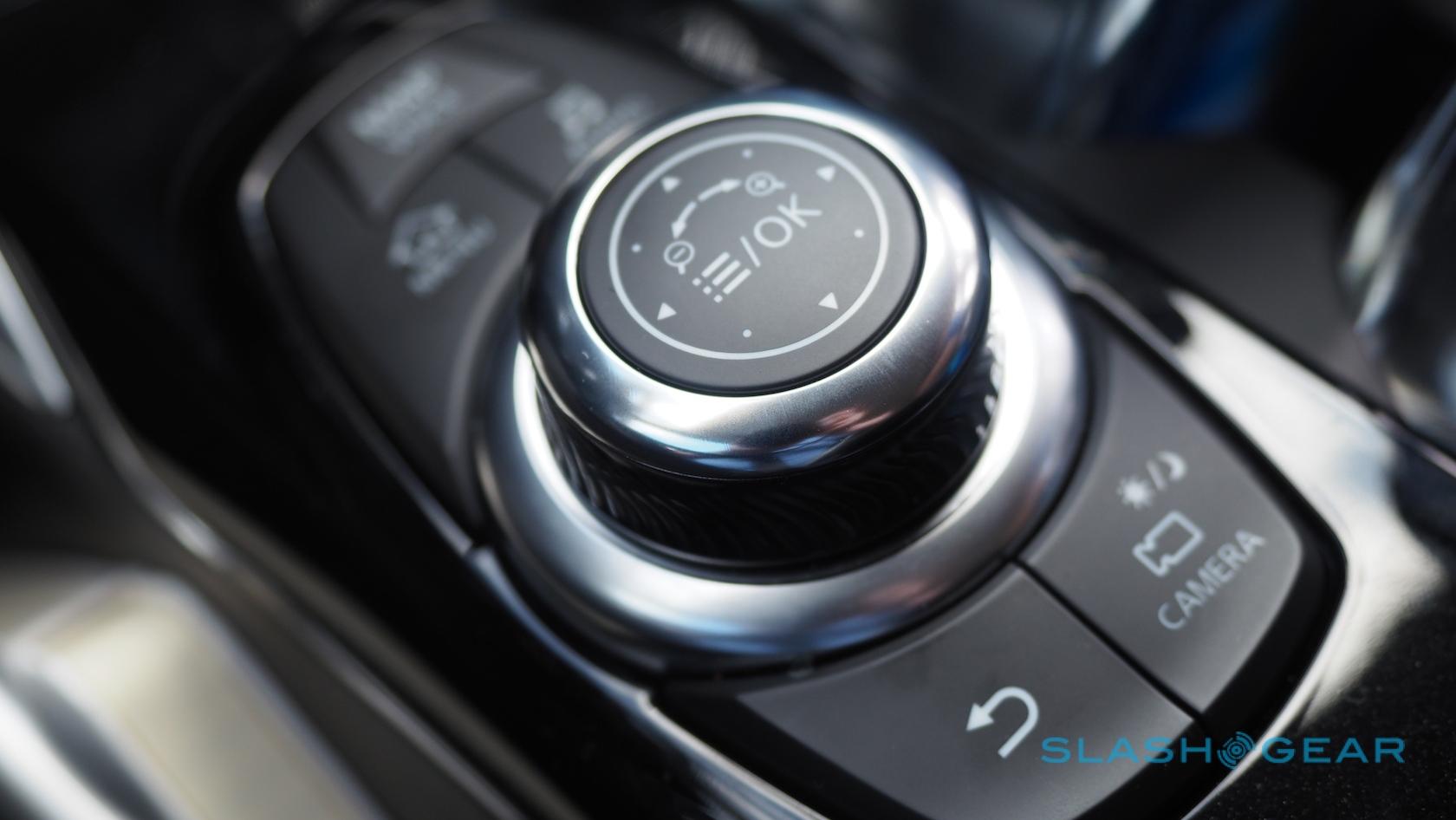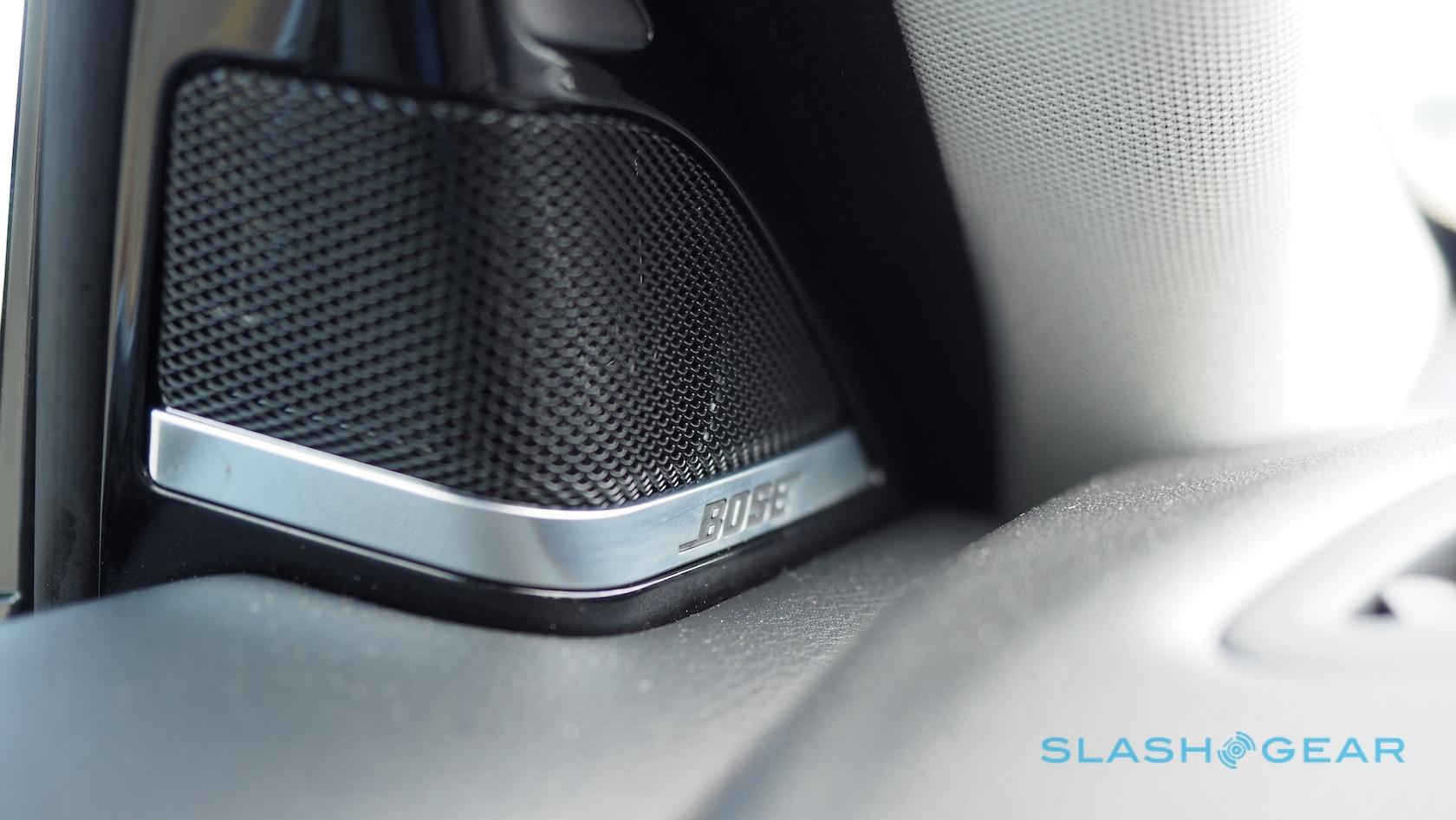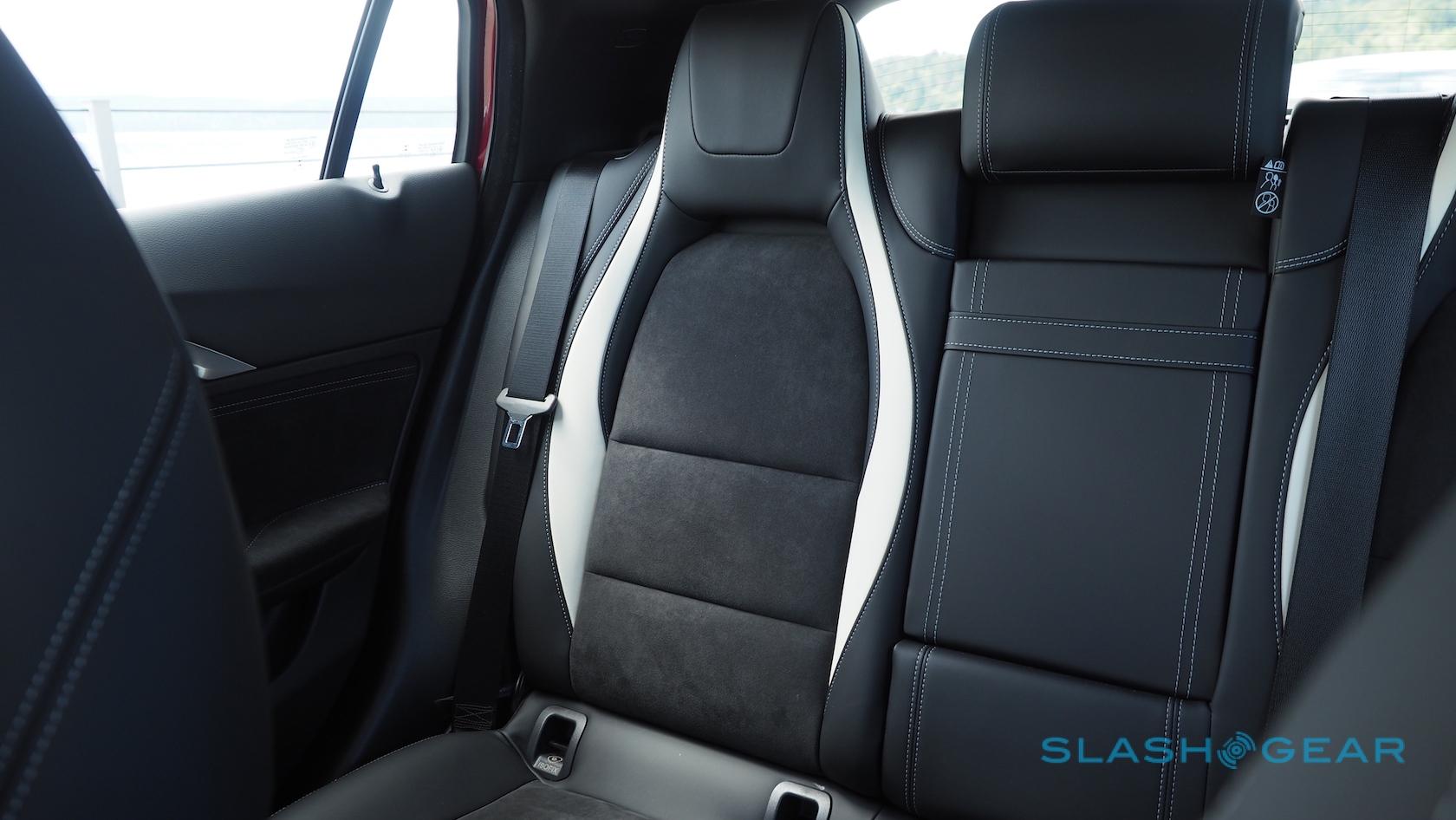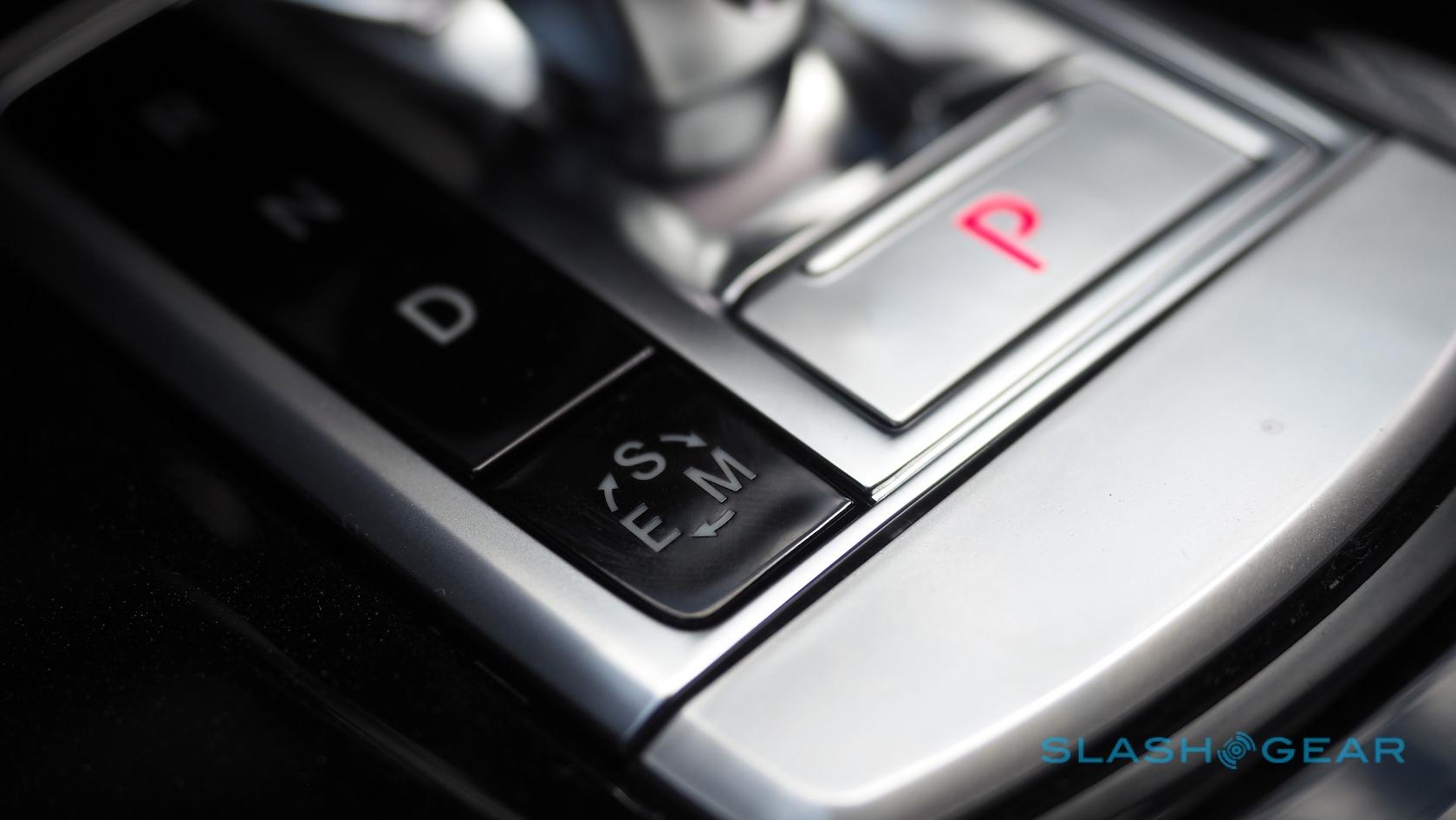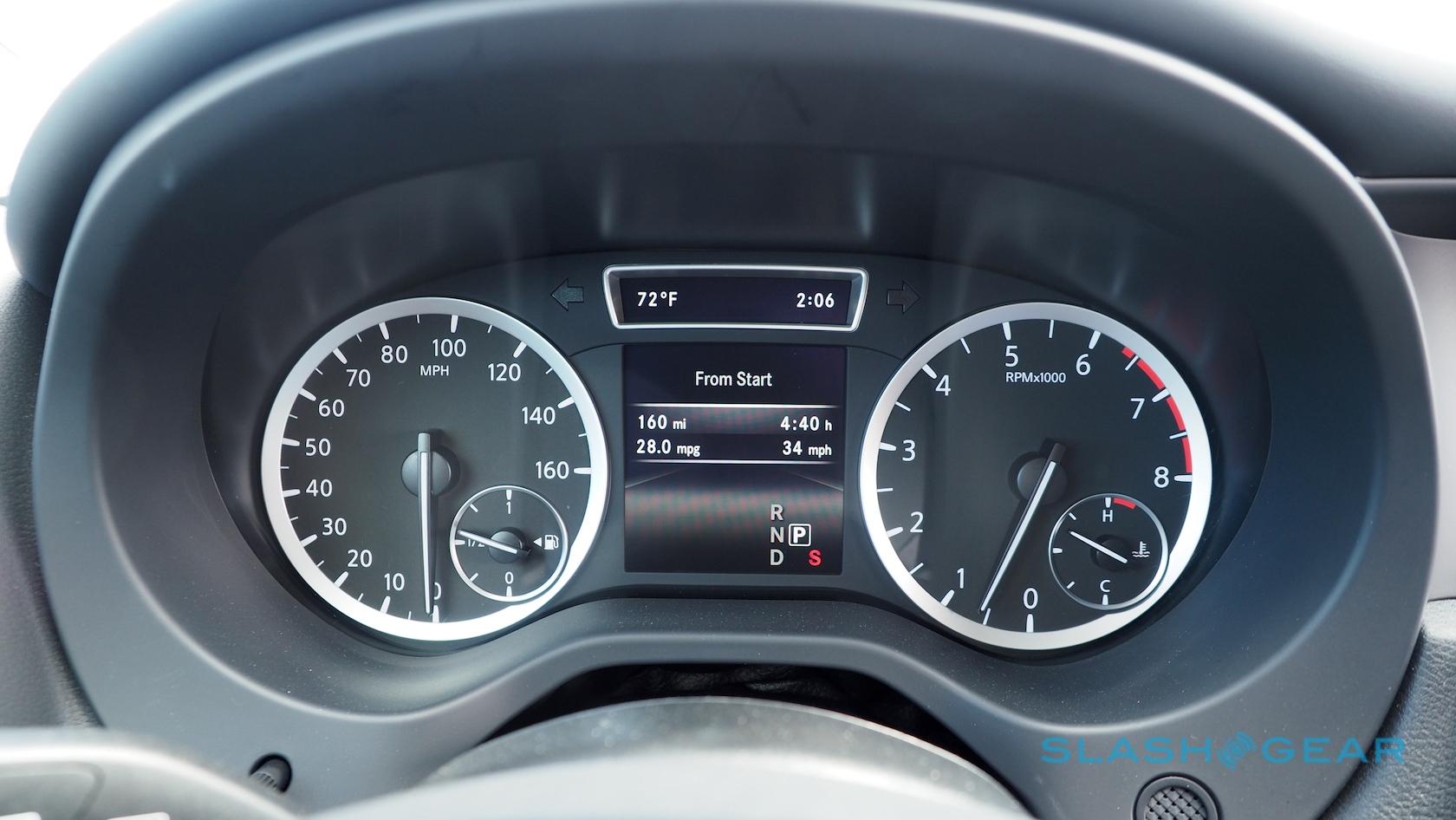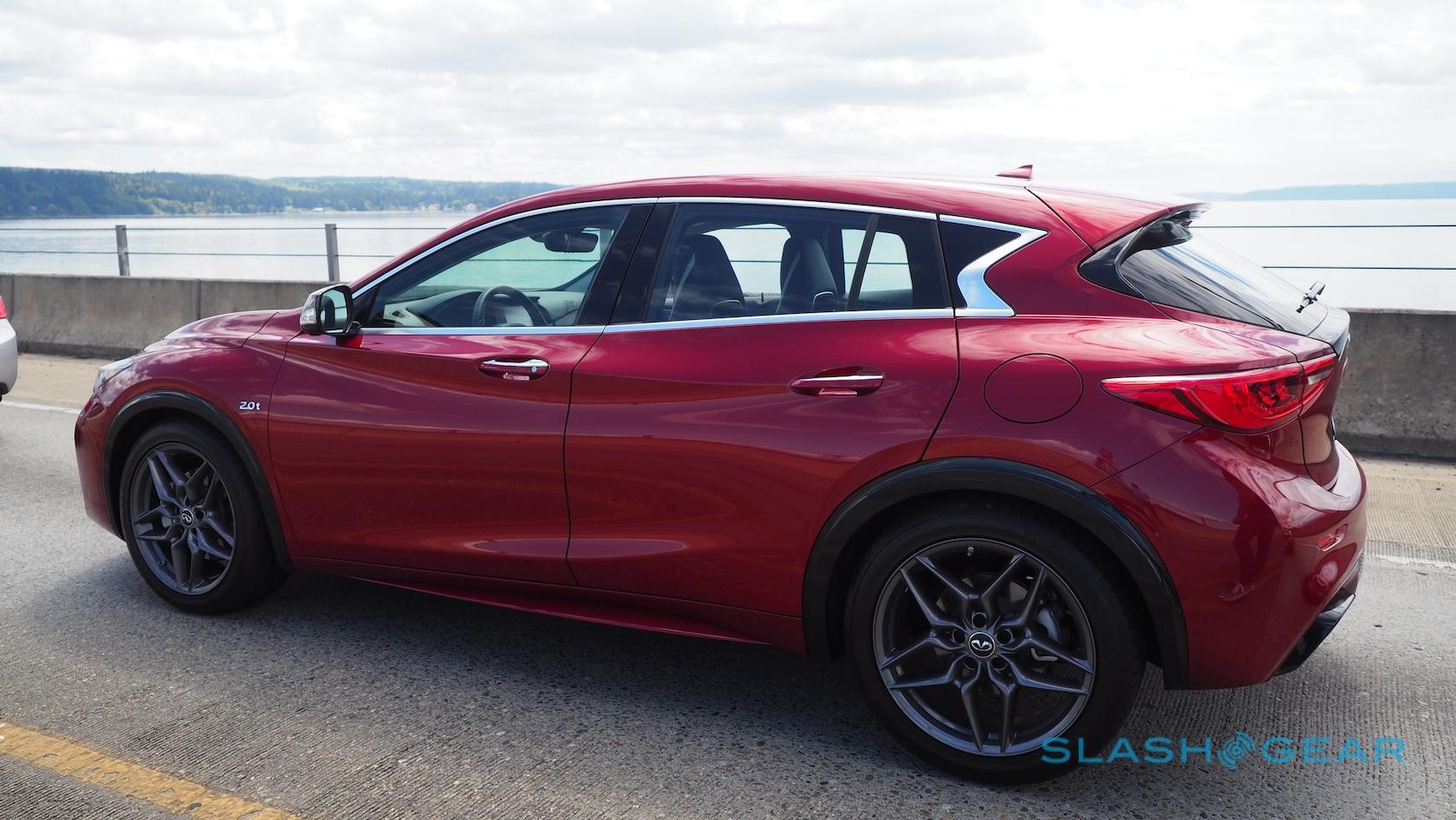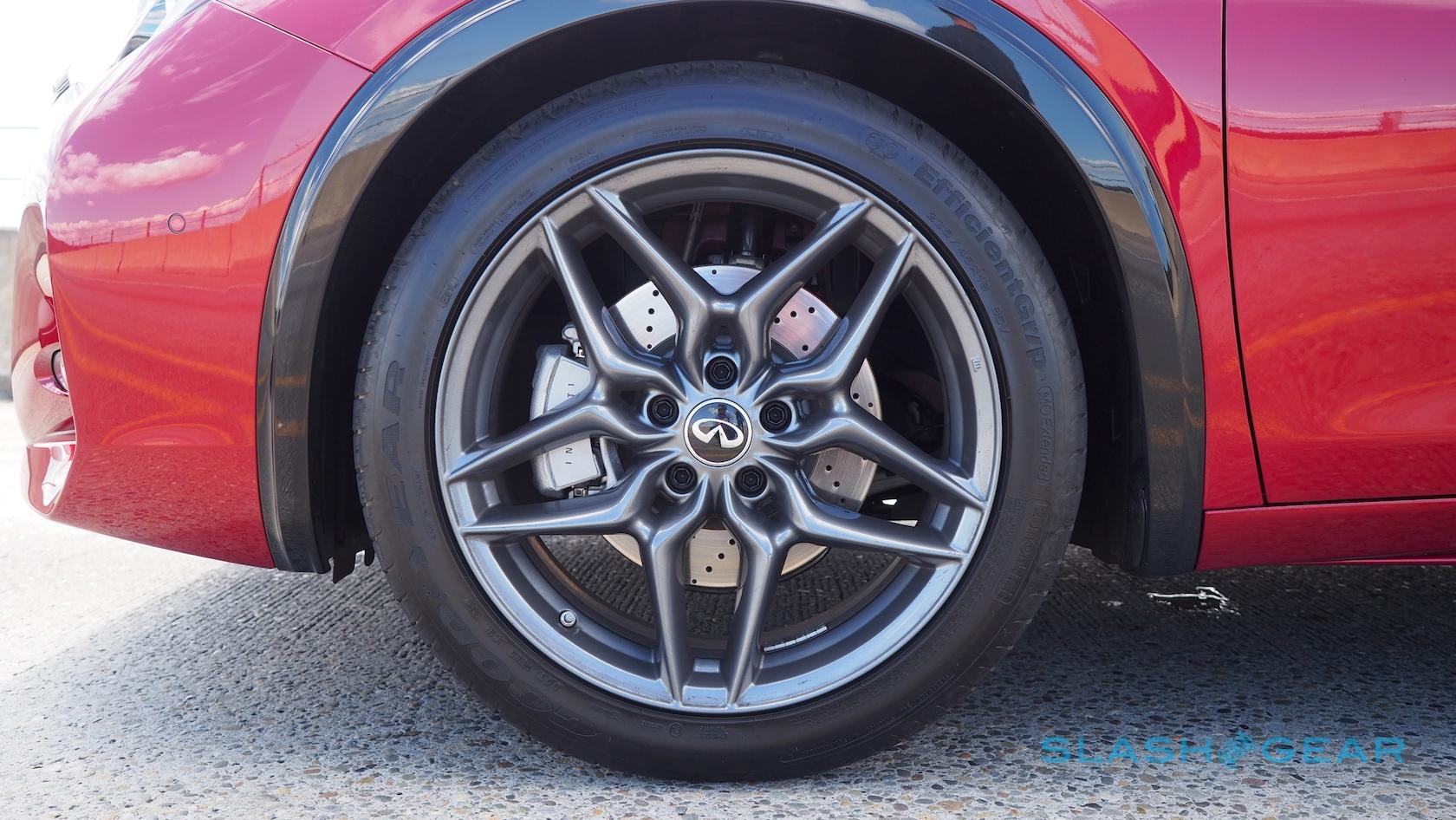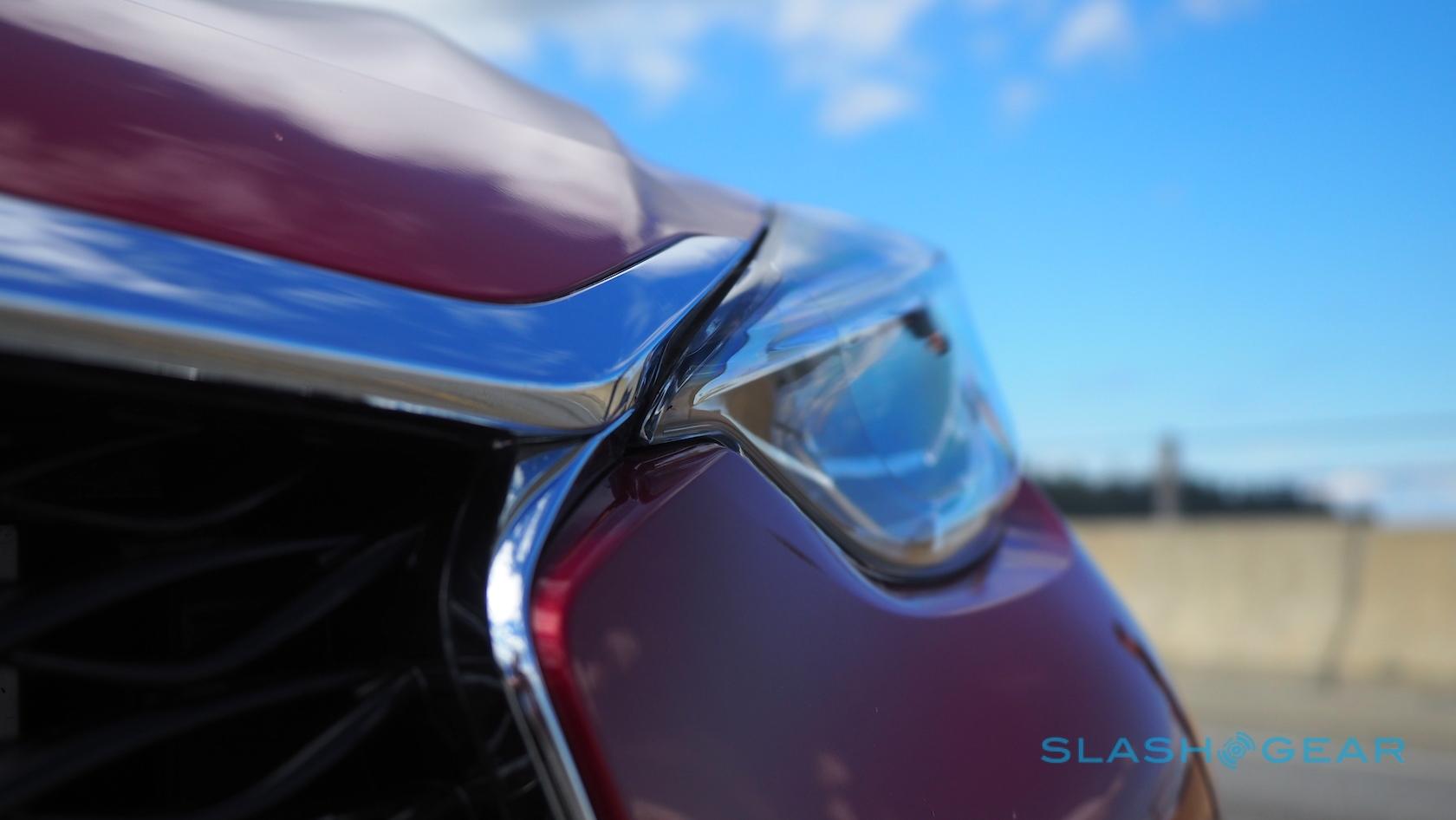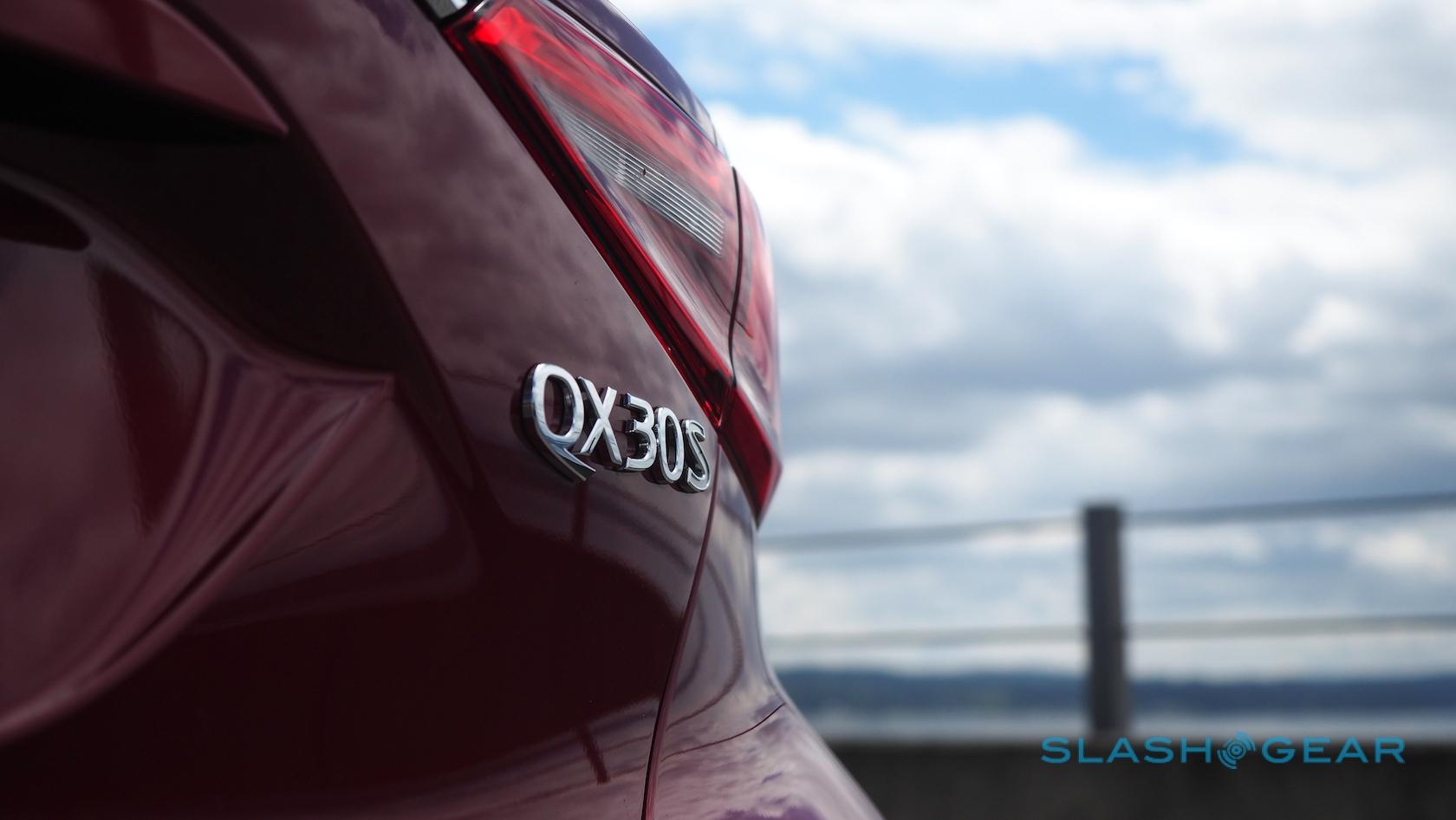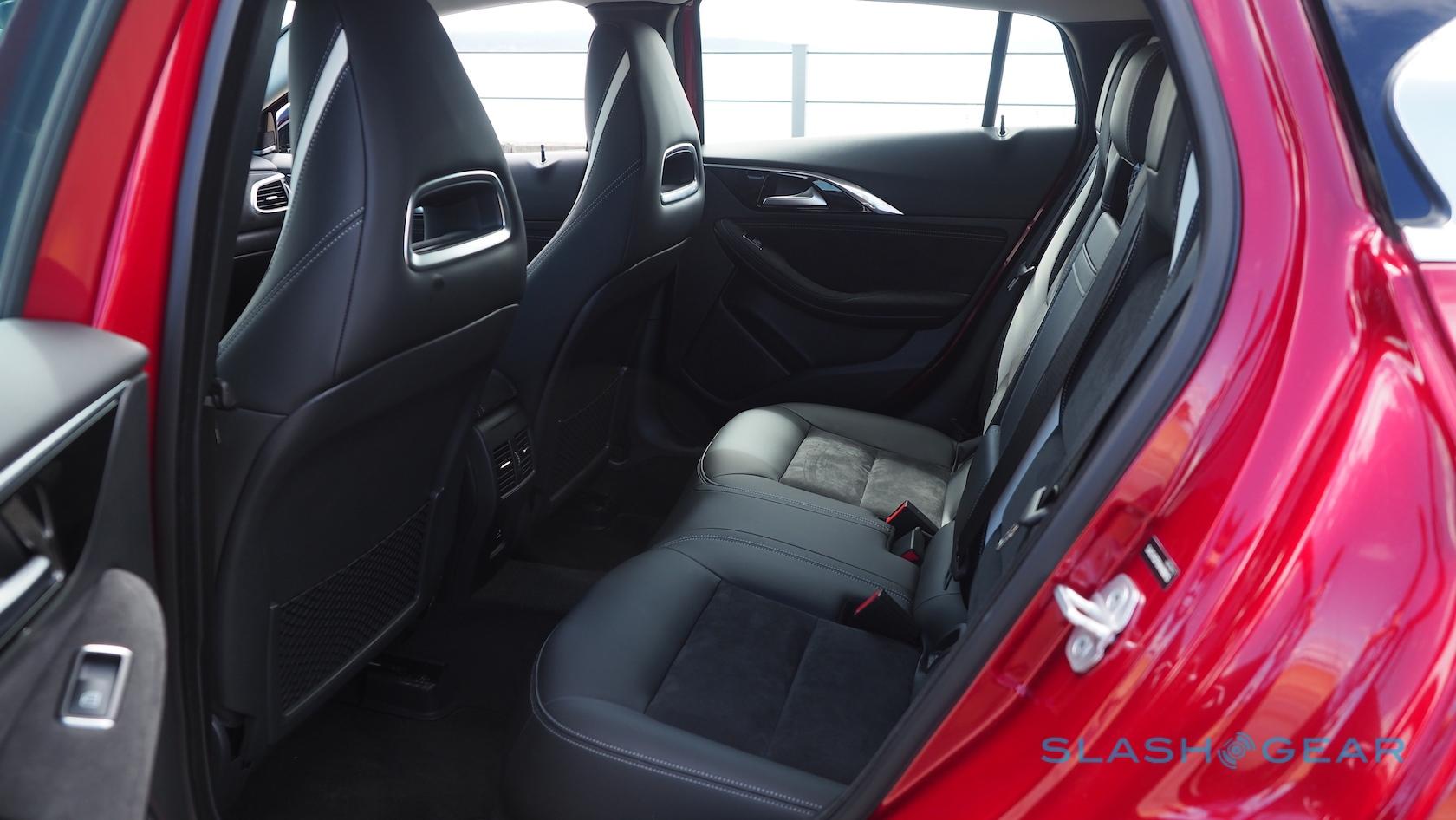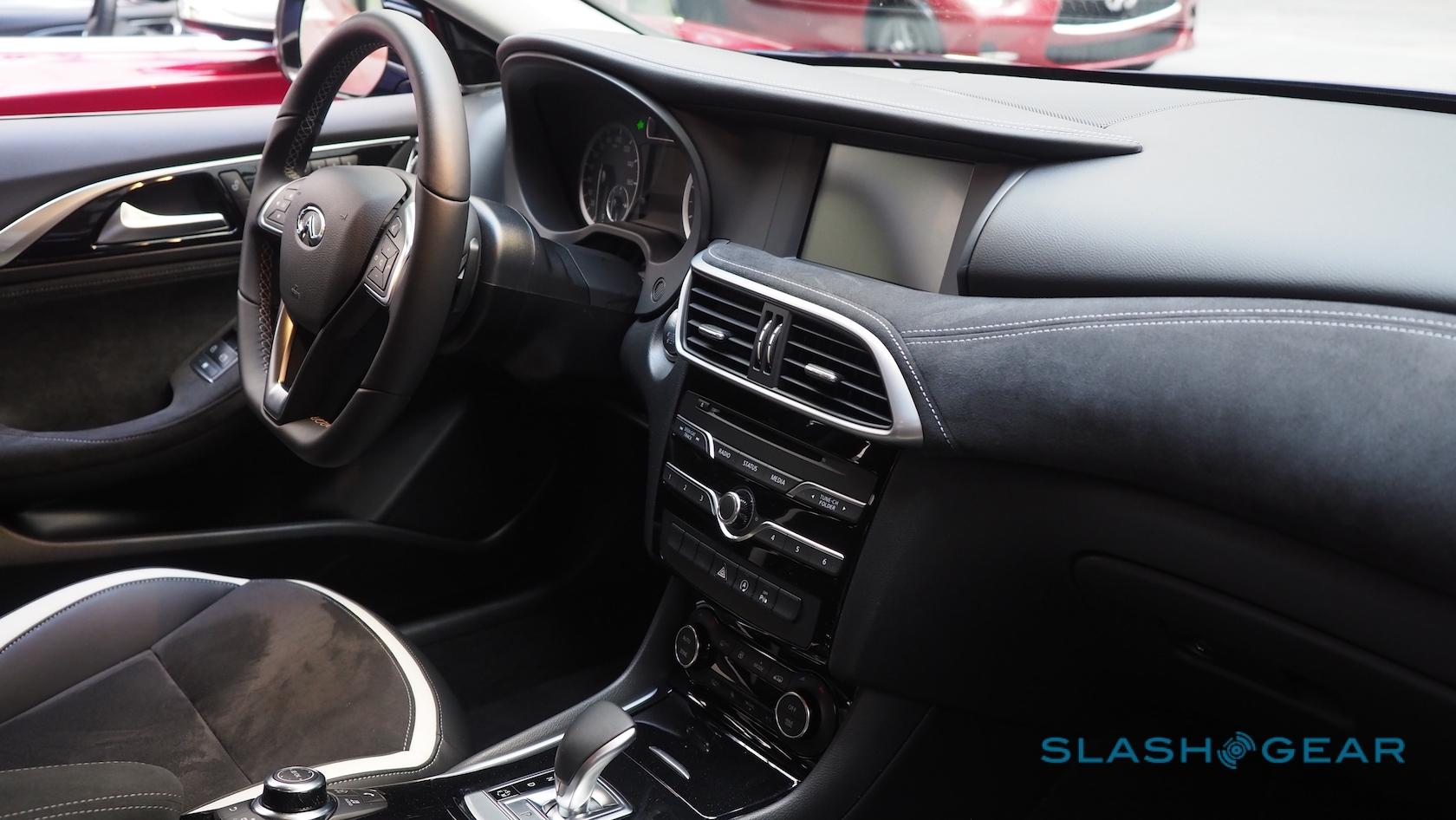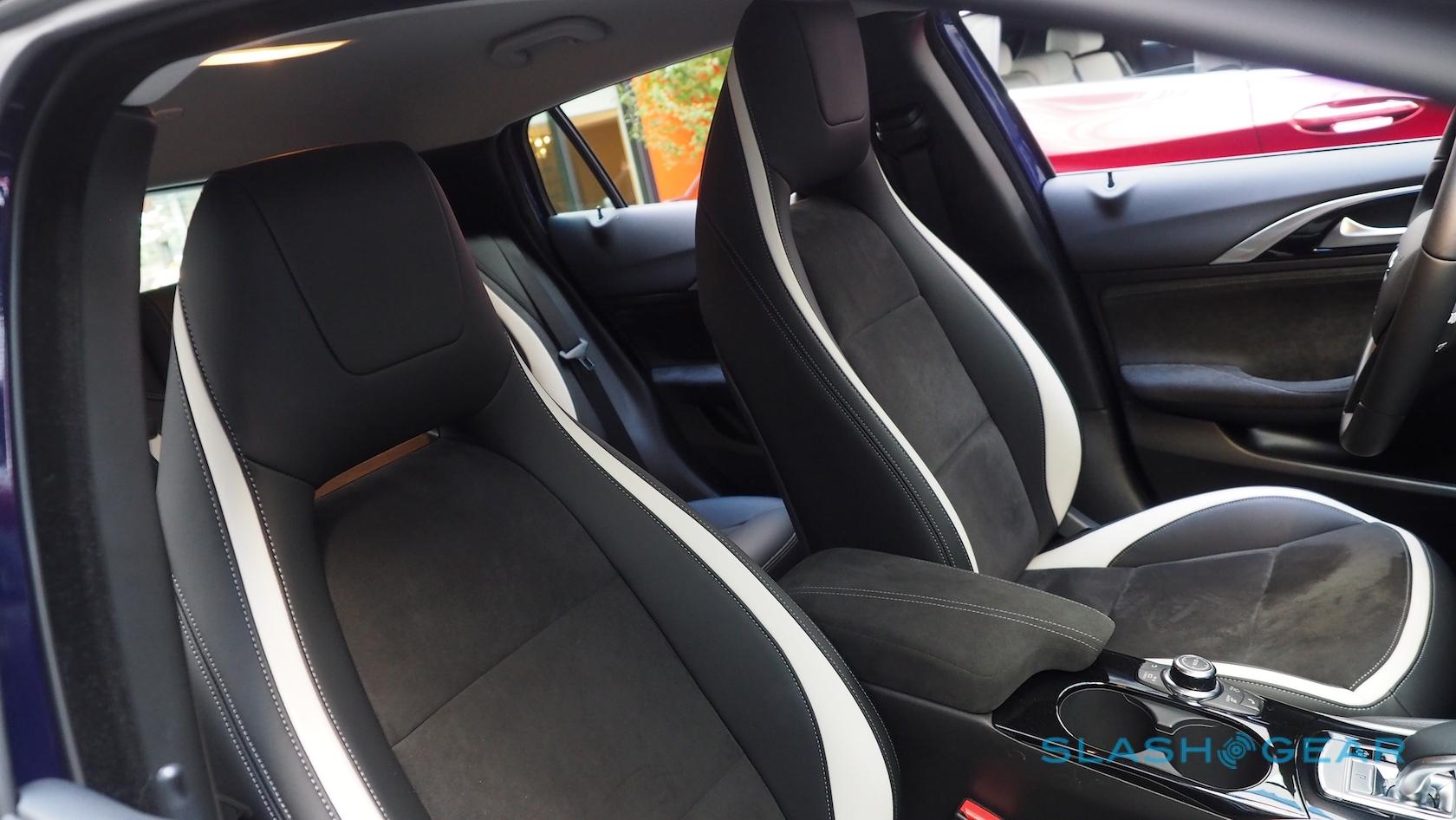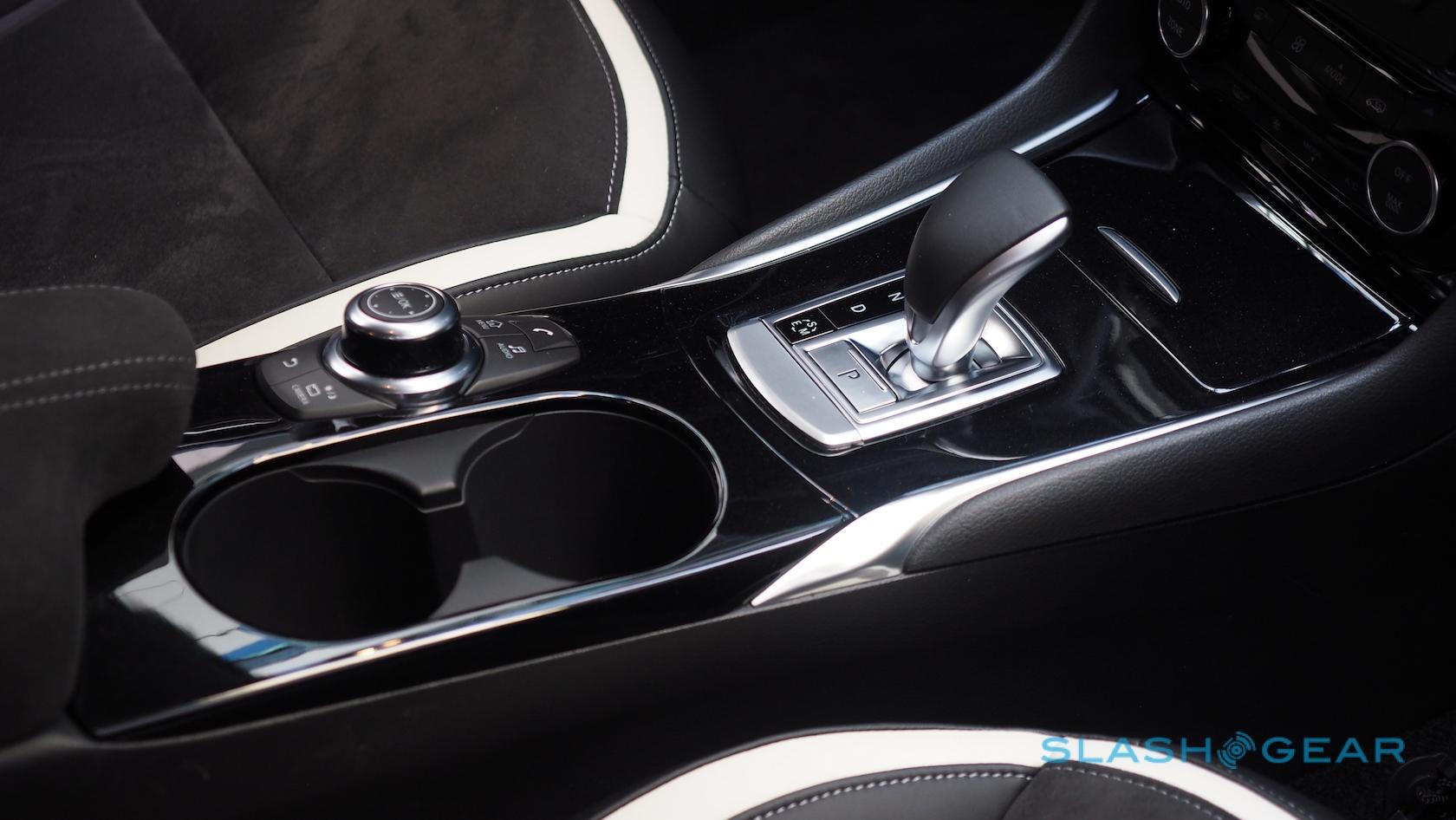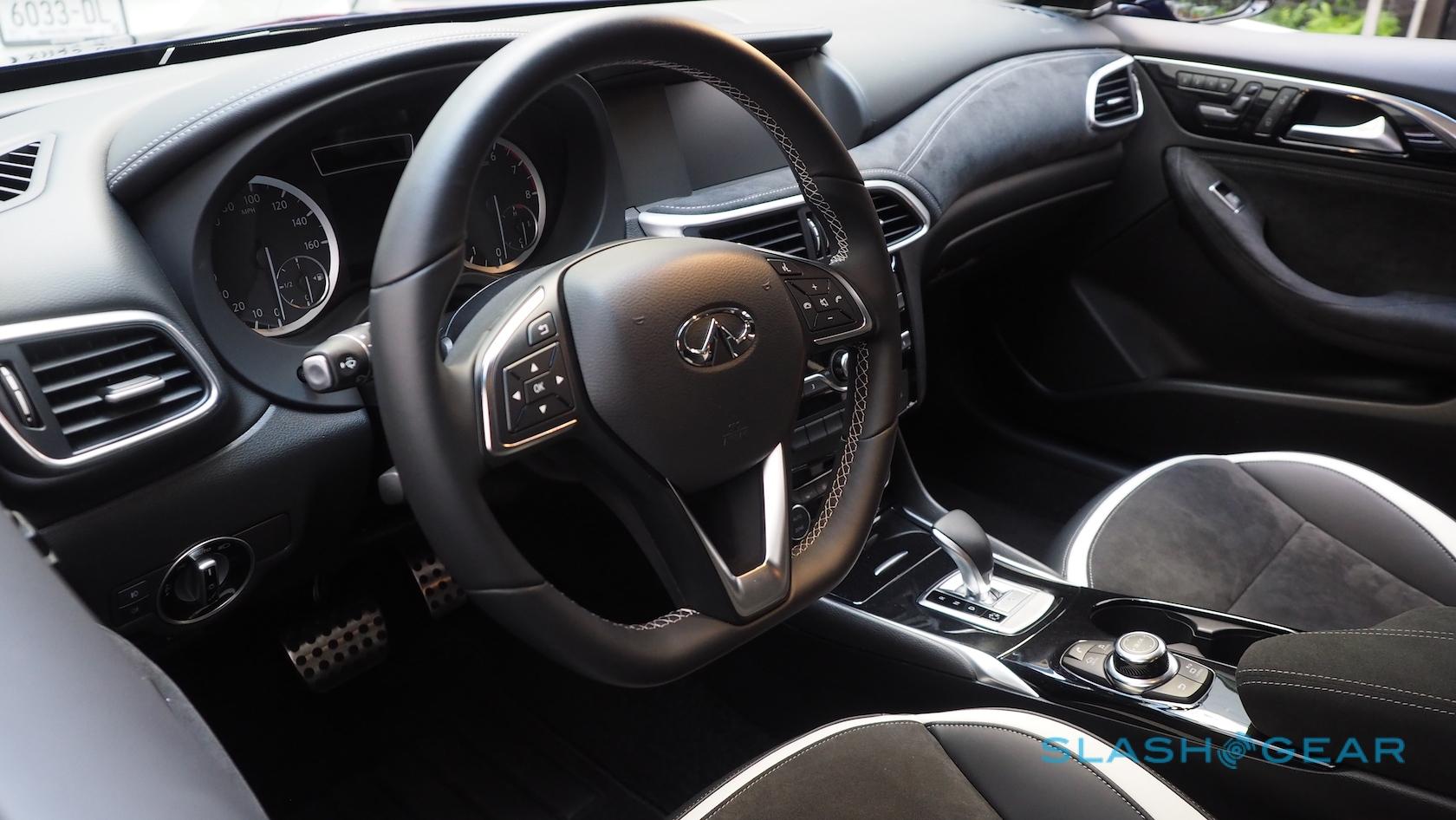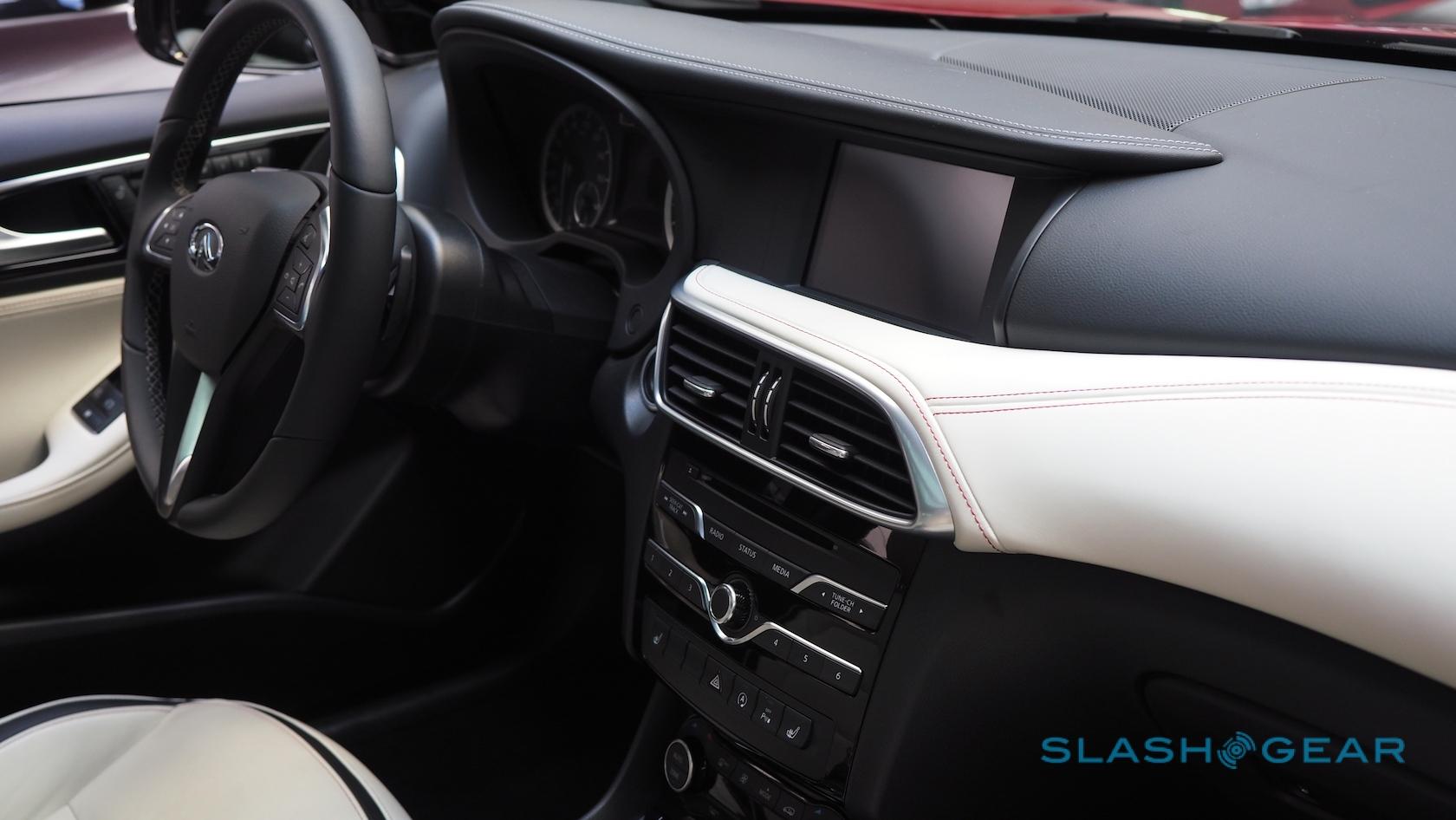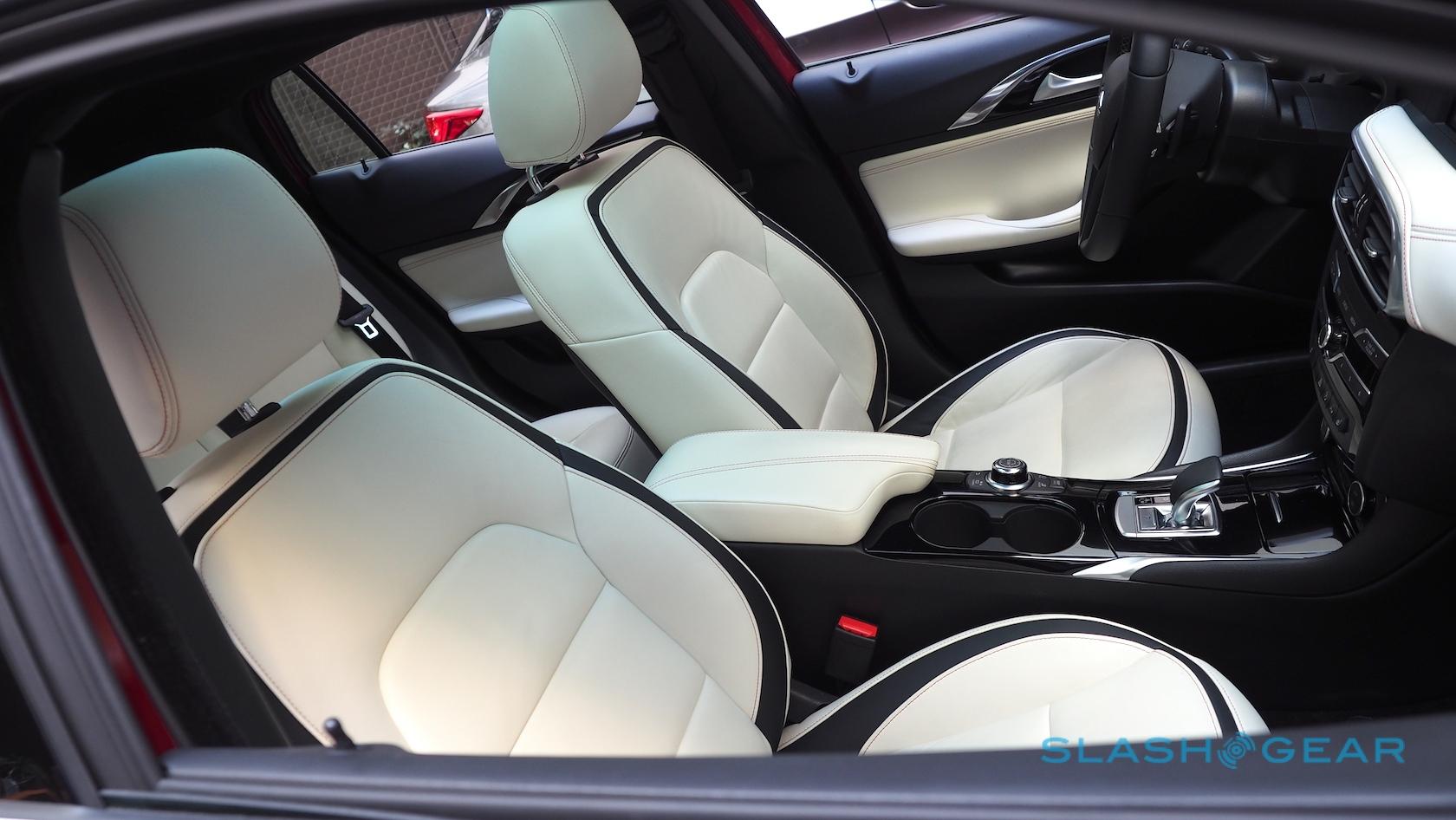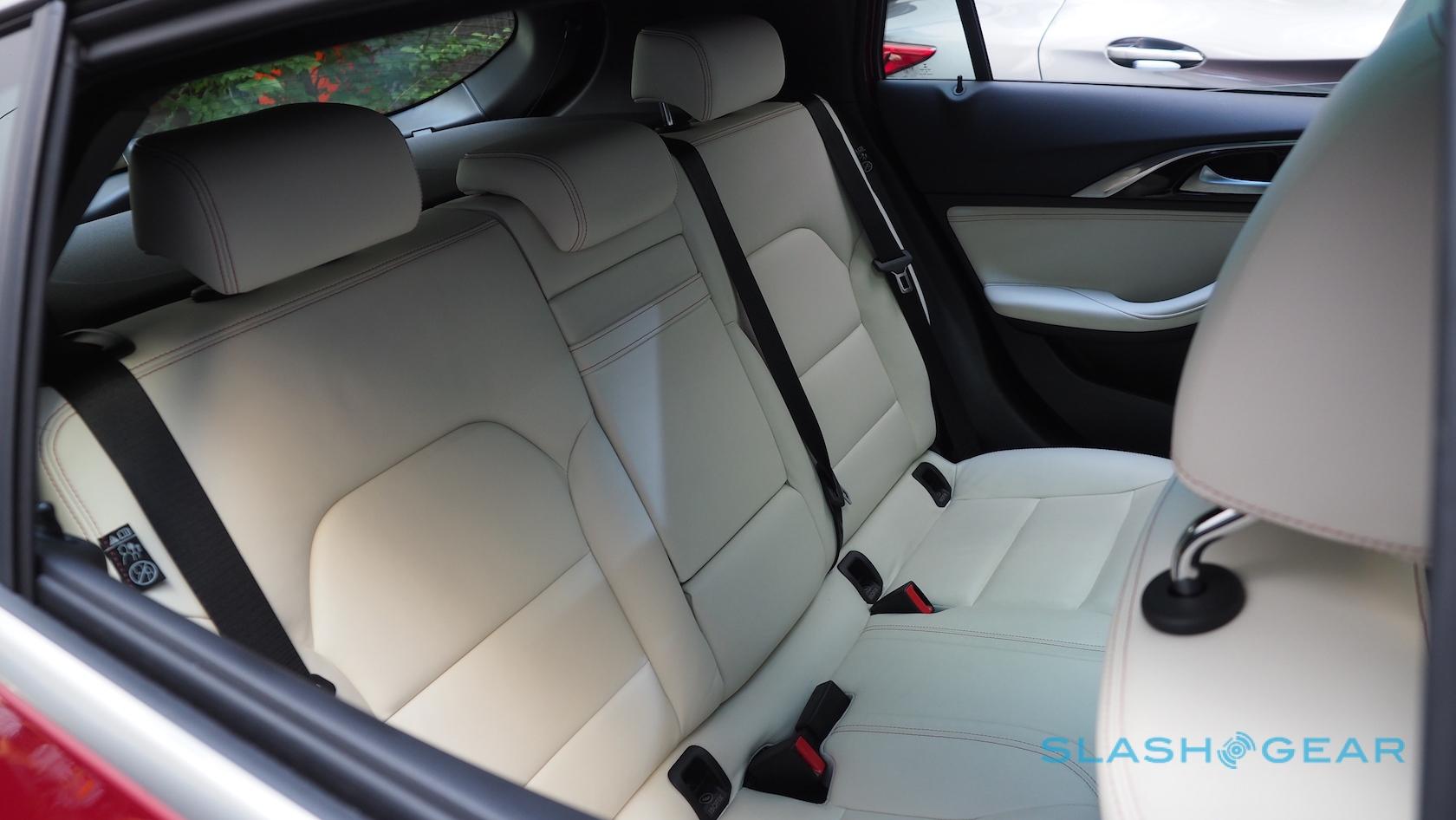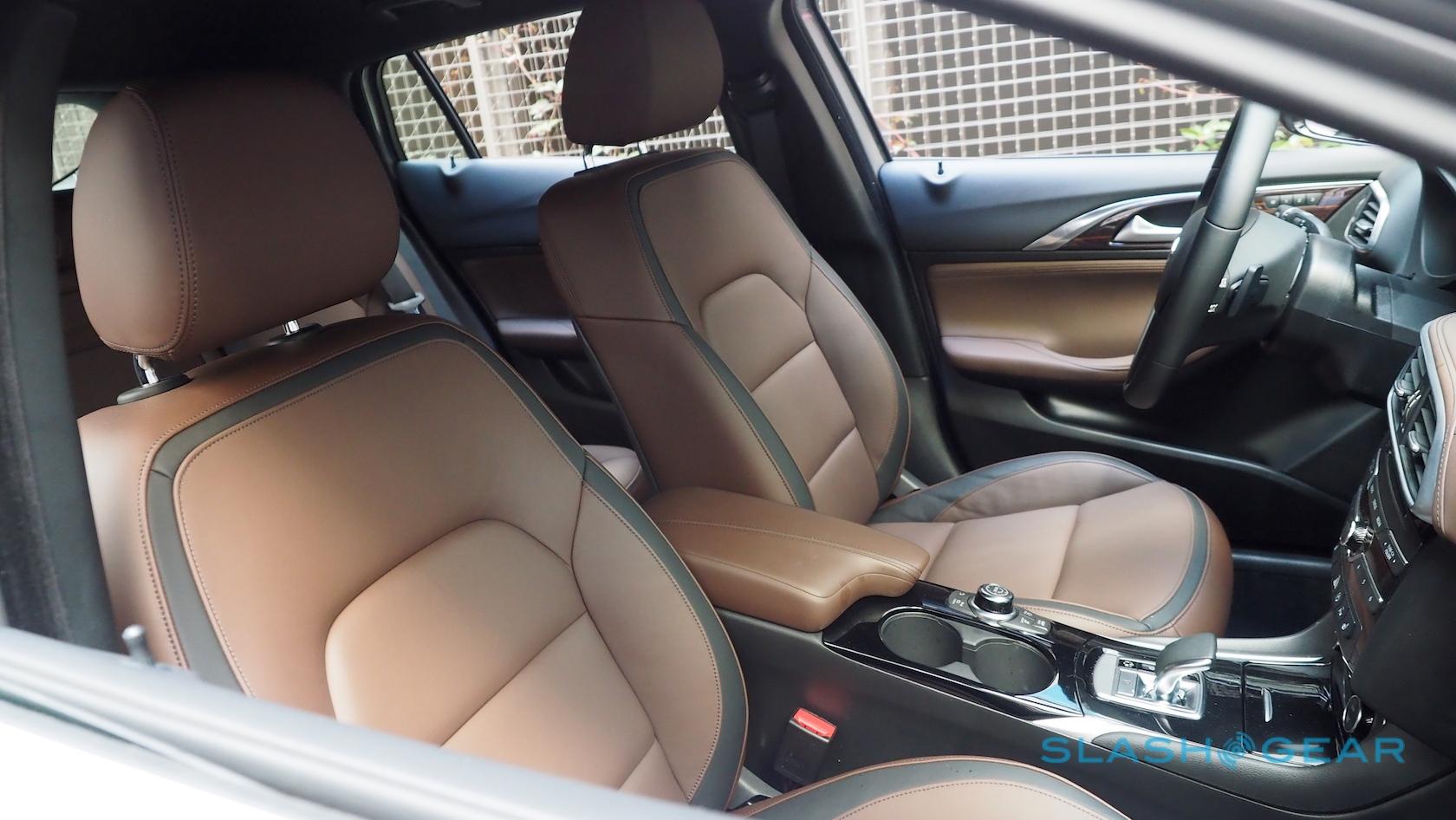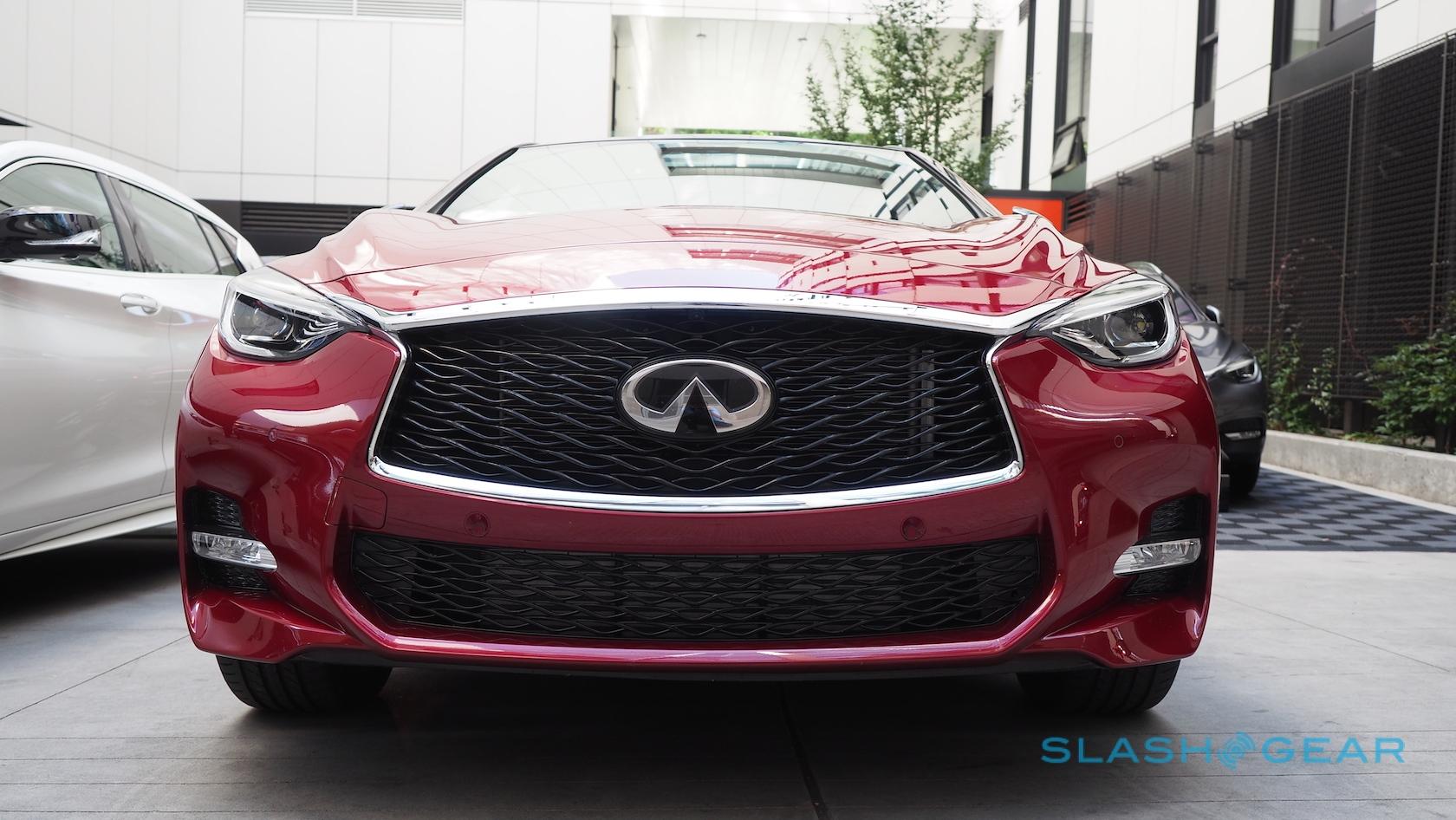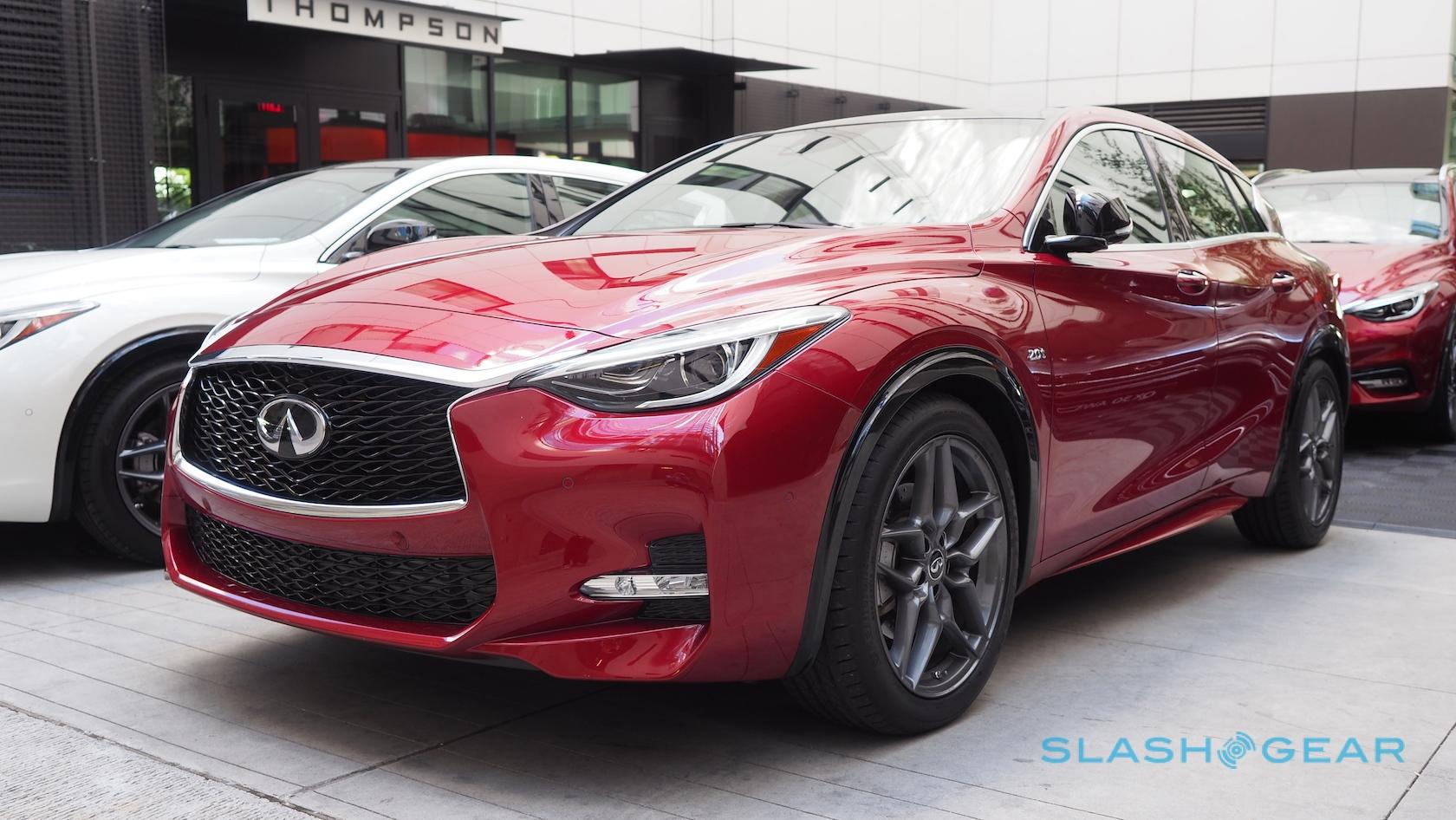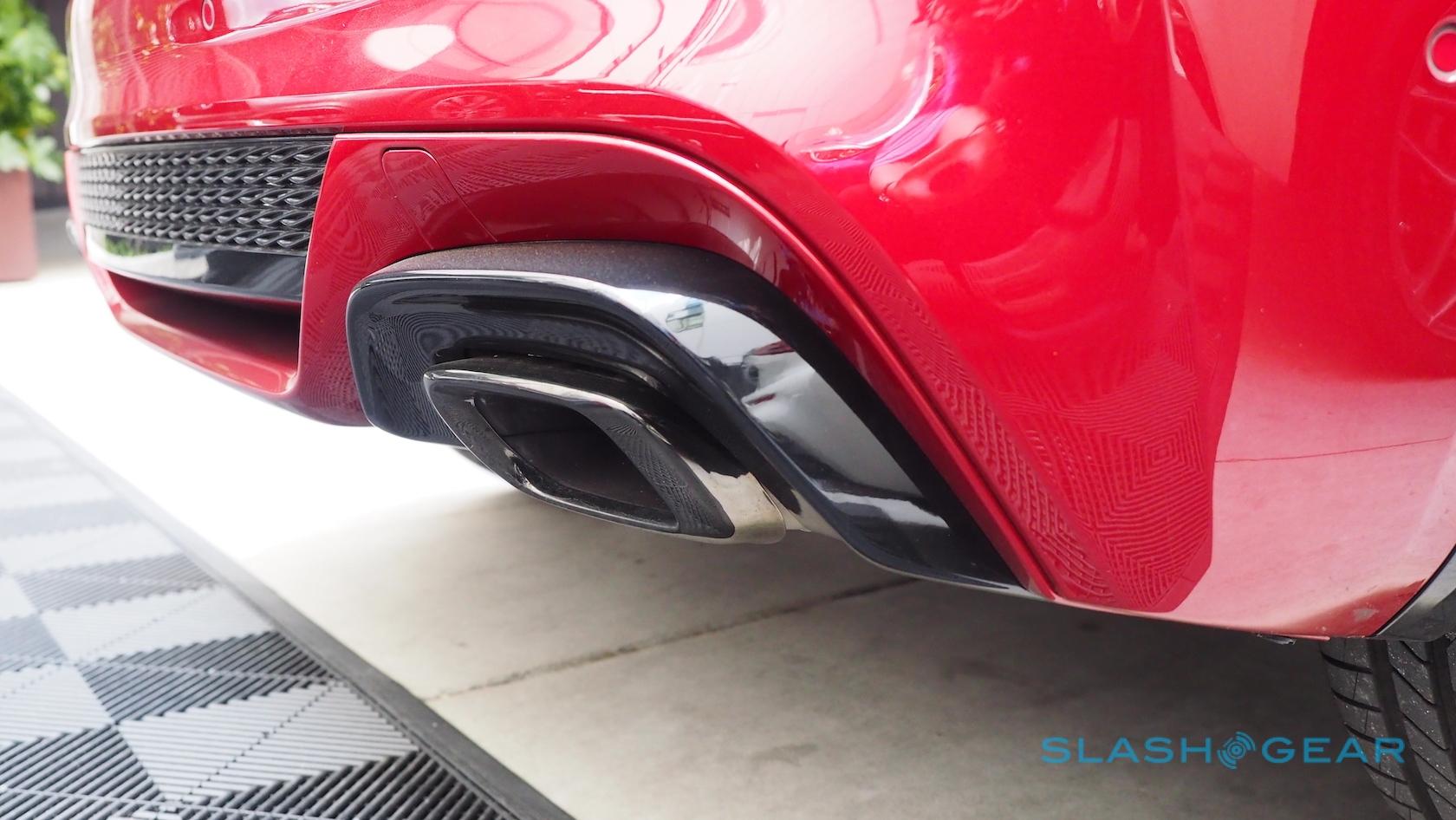2017 Infiniti QX30 First-Drive
The 2017 Infiniti QX30 is Japanese designed, built in post-Brexit Britain, with German parts and engineering, and packaged for crossover-loving America: if that doesn't earn it the title of a "global car", I'm not sure what would. Taking over the reins of guiding new-to-brand buyers into the Infiniti family from the now-deceased G-series sedan, the QX30 arrives with high ambitions indeed, proudly setting its sights on the small, luxury crossovers from BMW and Audi.
Usually you'd discount that as premium upstart posturing, and I wouldn't blame you. This time around, though, Infiniti has a secret weapon: underneath Japan's bold styling, this car speaks German.
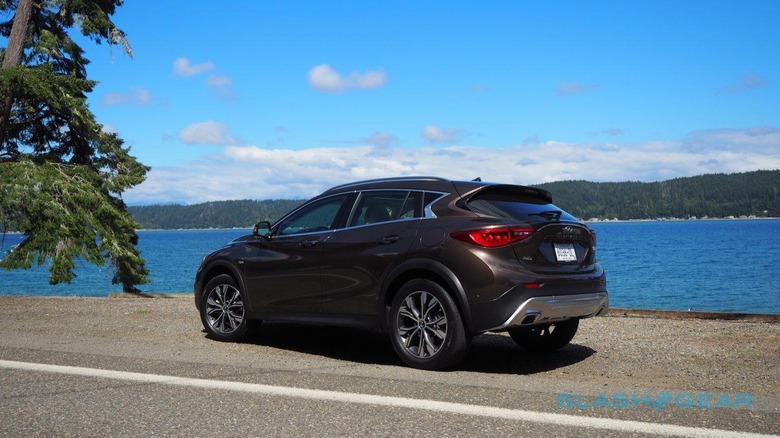
In fact, the QX30 comes courtesy of Renault-Nissan's 2011 deal with Mercedes-Benz, taking the underpinnings of the A-Class and the GLA. For the US, Infiniti has three variations on the QX30 theme. As well as the regular car – which is sold as the Q30 outside of the US – there's the 0.6 inch lower QX30 Sport (or QX30 S) and the 1.2 inch higher QX30 AWD.
Both the base car and the QX30 Sport feature front-wheel drive; the QX30 AWD, as its name suggests, comes with all-wheel drive. All the same, most of the time it defaults to front-wheel drive for economy purposes, though up to half of the crossover's power can be shunted back to the rear wheels if the electronics decide grip is lacking.
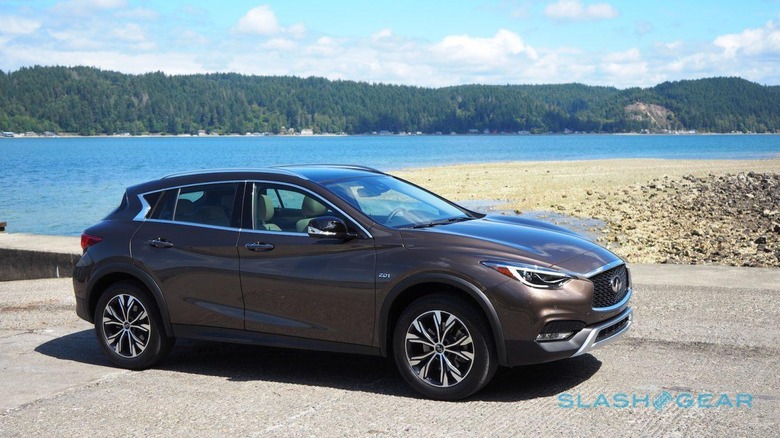
All three use the same engine, a 2.0-liter turbocharged four-cylinder with 208 horsepower and 258 lb-ft. of torque that Infiniti shares with Mercedes-Benz. It's paired with a 7-speed dual-clutch transmission as standard; unsurprisingly there's no manual option, though there's a "Manual Mode" which leaves you to handle gear changes with the standard-fit paddle shifters instead.
Styling borrows heavily from Infiniti's 2013 Q30 concept, and in fact the production model does a better job than most in translating show car impracticality to something factories can actually pump out at volume. Infiniti would like you to know that wasn't easy, either, calling out the sharply creased shoulder line that apparently demanded a new 3D manufacturing process to achieve.
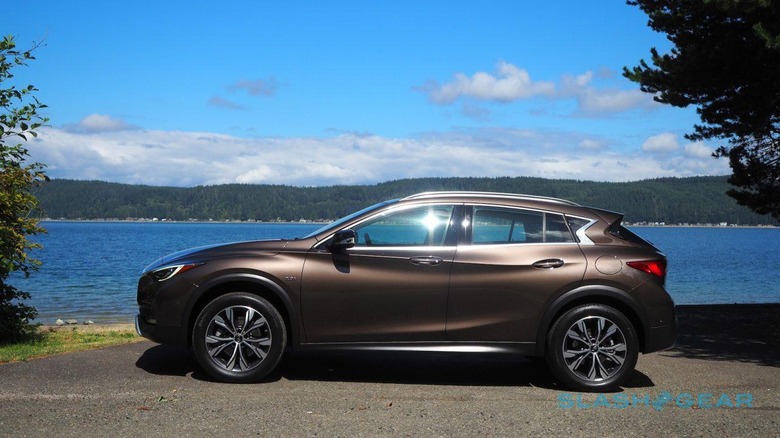
It's an element that helps break up what could otherwise be a fairly slab-sided car, given the low profile to the roofline. It looks better on the 19-inch alloys that come standard on the QX30 Sport – the AWD gets 18-inchers – and Infiniti's signature crescent cut C-pillar is a neat and eye-catching addition.
All the same, when you park it side by side with a GLA, the proportions and some of the styling elements are noticeably similar. Infiniti does throw exclusive front and rear fascias on both the Sport and AWD models, while the latter gets standard roof rails.
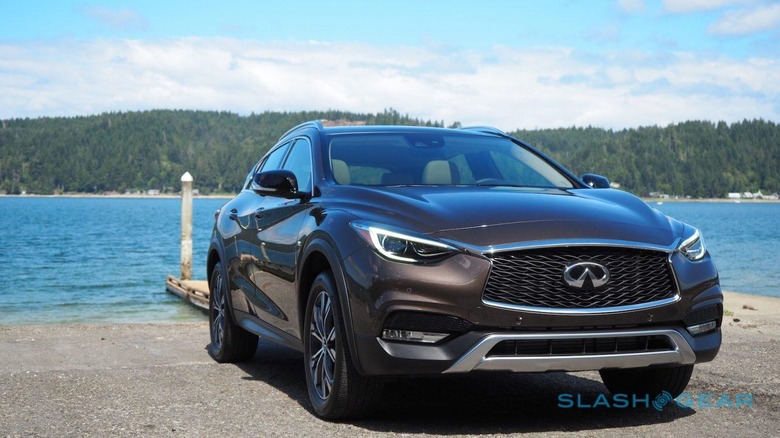
Though the engine may be the same, Infiniti has tuned it differently for the AWD and Sport models. Turbo lag is minimal, though the decision to default to Eco mode on every start – while understandable for fuel efficiency reasons – means the QX30 doesn't put its best foot forward when it comes to first impressions. Accelerator response is a little wooly, while the gearbox is keen to slip smoothly up to higher gears in search of frugality.
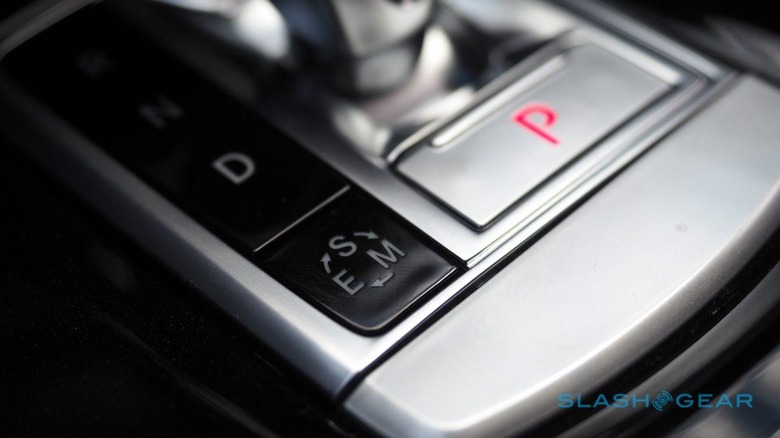
Better, then, to hit the button by the slender-necked transmission shifter and switch to Sport mode. In the QX30 AWD, the car feels more planted as a result: pulling away from lights is swifter and, while it's neither the finest nor the worst sounding 4-cylinder engine I've heard, there's a contented gurgle as the turbos spool up.
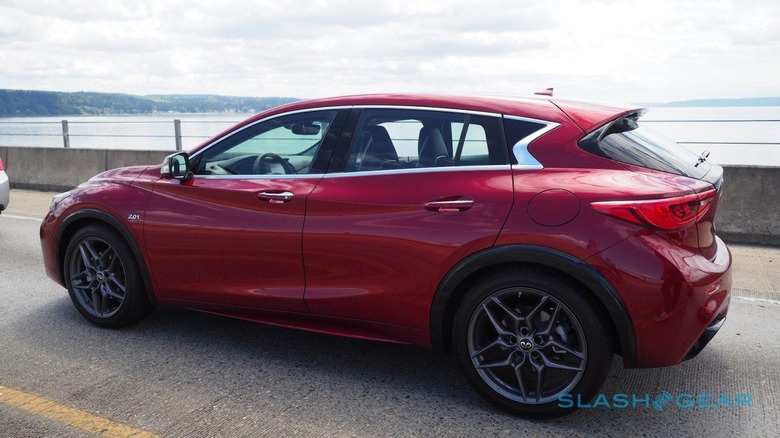
You notice the difference when you step into the QX30 Sport. The springs are 4-percent stiffer than in the AWD – or 7-percent stiffer than the regular QX30 – and the steering has been given a more sporting tune that makes it weightier even if there's scant more communication from the road surface, and the outcome is less lean in the corners and a car that's generally more enthusiastic when it comes to turning. Straight line speed isn't going to put your neck muscles at risk – Infiniti's 2-liter matches the BMW X1 xDrive28i on torque, but lags behind the German in horsepower – but it's enough to make overtaking at highway speeds straightforward.
Maybe more importantly, the laggardness that Mercedes' GLA is often accused of has been chased away by Infiniti's engineers, leaving the throttle responsive rather than ponderous.
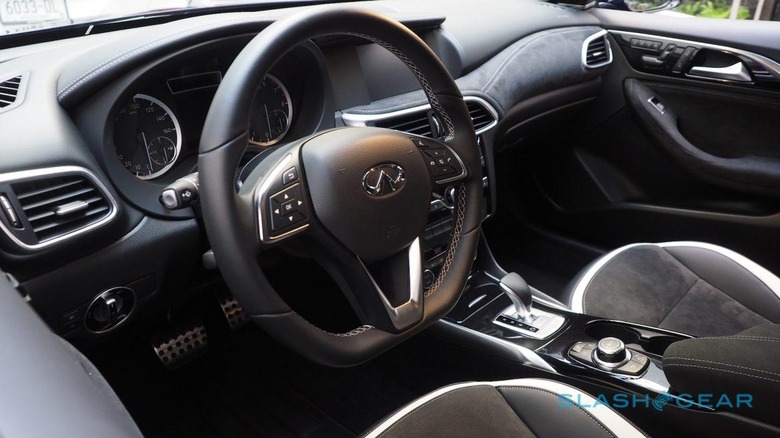
In the city, the auto-stop/start is smooth enough that my finger stayed away from the shut-off button; it should help with economy, too, though the automaker is playing figures close to its chest until the EPA numbers are final. I'm told to expect around 30 mpg on the highway; after several hundred miles of mixed city, highway, and backroad driving, the QX30 Sport was claiming 27.6 mpg.
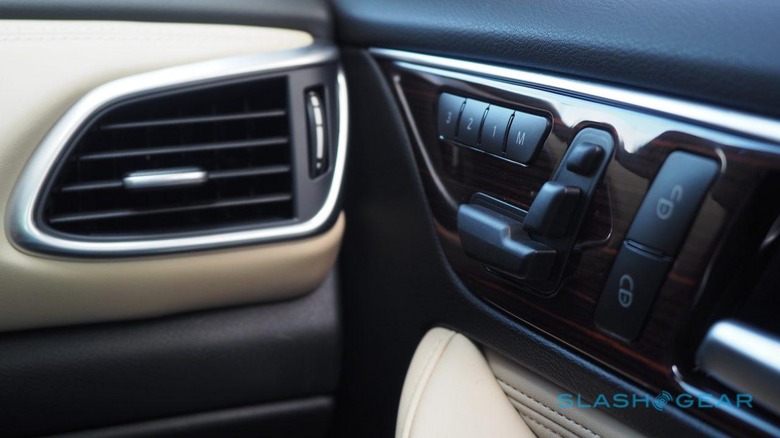
Inside, there's a lot less Nissan than in other recent Infiniti models, which I can't say is a bad thing. Those trademark swooping lines continue across the heavily sculpted dashboard, studded with switchgear and a steering wheel that no longer look and feel like they were yanked from the nearest Altima. That, of course, is Mercedes' handiwork: Infiniti lifted most of it from the GLA's parts-bin.
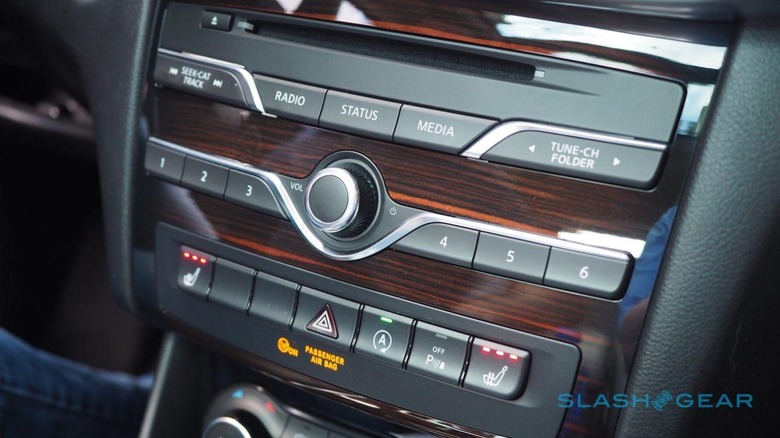
Infiniti isn't afraid of buttons, and the QX30 has plenty of them. Where other manufacturers are sidelining physical controls in favor of touch interfaces alone, the crossover's 7-inch touchscreen can also be remotely controlled by a dial in the center console. Infiniti's homegrown interface is basic but unchallenging as a result; you get neither Apple CarPlay nor Android Auto.
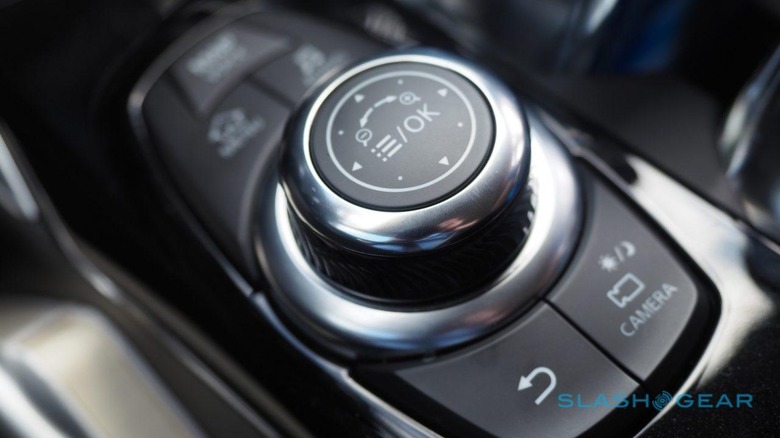
The radio and HVAC system have dedicated buttons and knobs, too; the result is a dashboard that's not so clean to the eye as in some rivals, but which should please those who bemoan navigating complex infotainment UIs when all they want to do is change radio station.
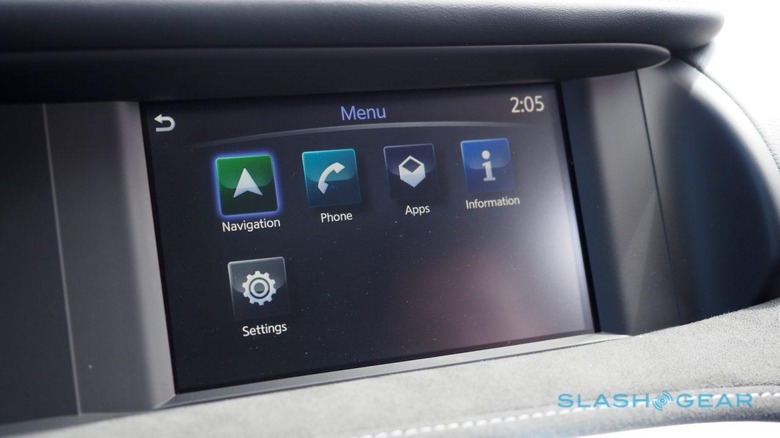
Leather optionally clads the seats and stretches to the dashboard as well, while the headliner gets faux-suede. Four leather colors are offered, too, ranging from traditional black and beige, though a chocolate brown, and finally eye-catching – but deeply impractical – bright white with red accent stitching. Infiniti offers real wood as an option, too.
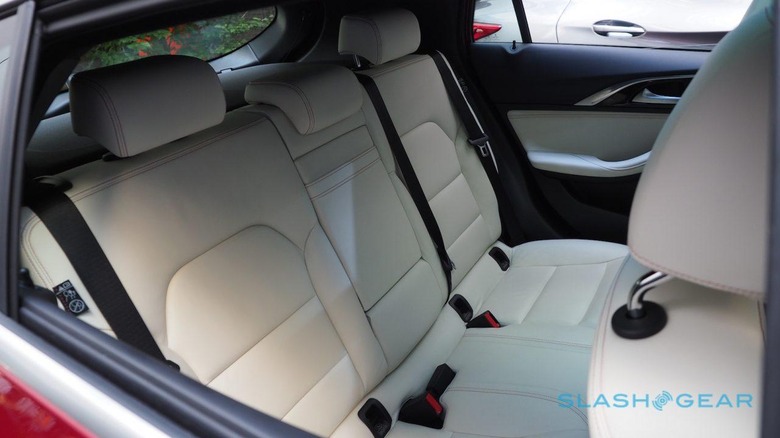
With greater than an inch more in the wheelbase than the BMW X1, I expected the QX30's rear seats to feel spacious. There's legroom there, certainly, but the significantly lower roofline than its crossover rivals – the Infiniti is about 4-inches lower than the X1 and Audi Q3 – steals headroom and leaves the back feeling snug. 5'8 adults shouldn't struggle, but anybody taller might find themselves grazing the roof lining; ironically, the optional panoramic moonroof makes the space feel larger visually, but actually cuts the amount of physical head space in the process.
Open the trunk and there's 19.2 cubic feet with the rear seats up. The swooping rear glass does limit your capacity for boxier items, mind.
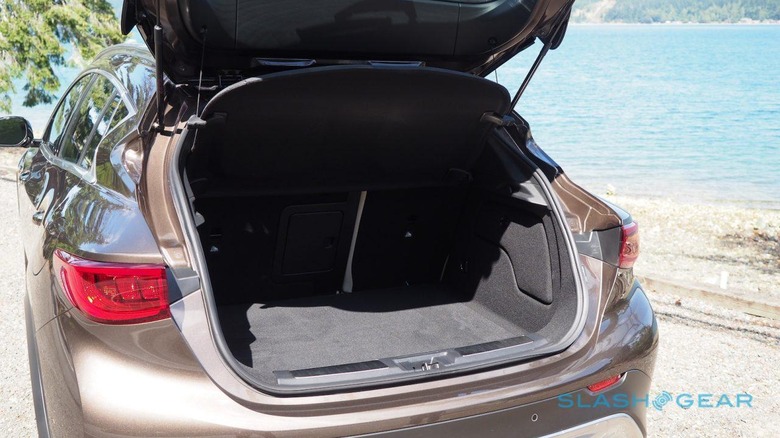
Infiniti hasn't been shy with the gadgets. The QX30 offers Intelligent Park Assist – twelve sensors figuring out whether a space is large enough for the car, and then automatically twiddling the wheel to park it while you handle the gas and brake pedals – as well as lane departure warnings (though not active lane-keeping), adaptive cruise control which can bring the car to a complete stop in traffic, and auto high-beams.
My favorite feature, though is the 360-degree bird's eye camera, which assembles an all-around view of the car from four cameras. Infiniti combines it with moving object detection, which warns you if a stray dog, child, or Lexus wanders into range while you're reversing.
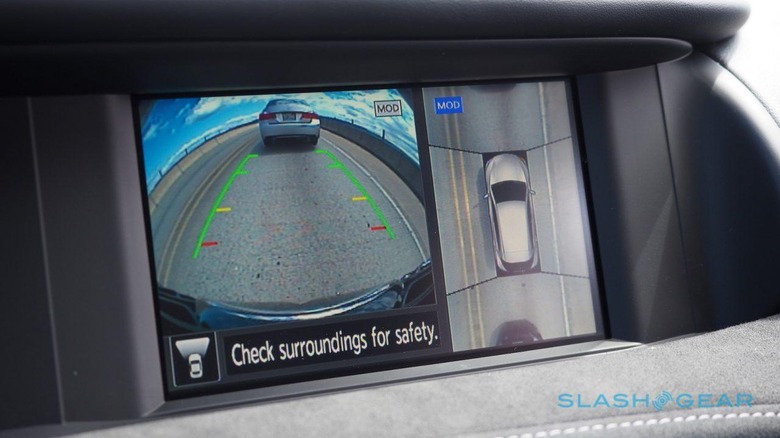
They won't surprise you, but the QX30's price might. The FWD entry-level car comes in at $29,950, just making it under the $30k mark (though only if you ignore the $950 destination on top). For your money you get dual-zone climate control; a six-speaker audio system; power folding, heated exterior mirrors, and LED running lamps.
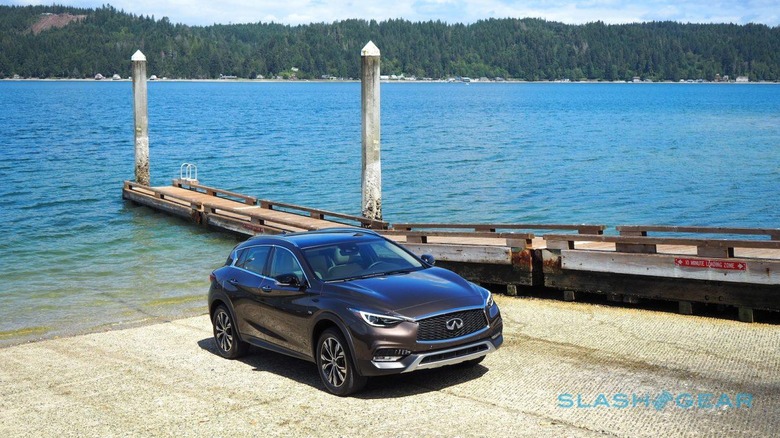
If you want Nappa leather on the seats and dash, an 8-way power driver's seat, heated front seats, and AWD, the QX30 AWD Luxury comes in at $34,400. The QX30 AWD Premium at $39,550 adds the 10-speaker Bose audio system, navigation, the moonroof, rain-sensing wipers, LED front fog lamps, and heated washers. It's the car Infiniti expects to sell the most of, though it rises to $42,750 with both the LED package's LED headlamps, interior ambient lighting, and active front lighting.
Finally, the QX30 Sport starts out at $38,500 with the moonroof, navigation, 10-speaker Bose audio, 19-inch wheels with cross-drilled front rotors, and 360-degree camera plus park-assist. It claims to $42,100 when you through in leather seats rather than cloth, plus the LED and tech packages.
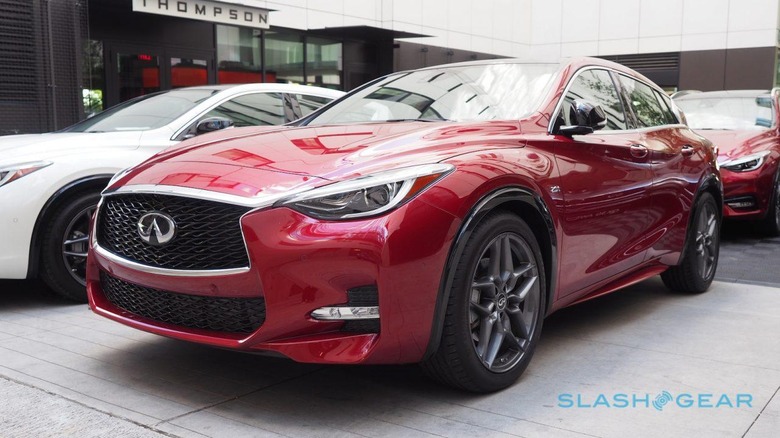
Infiniti conspicuously undercuts the German rivals it would prefer that you compare the QX30 to, both the BMW X1 and the Audi Q3. Its Mercedes-Benz GLA cousin carries an almost $3k premium. Cross-shopping with Lexus results in an imperfect match against the CT Hybrid and the NX crossover, either of which are more expensive.
NOW READ: 2016 BMW X1 Review
Questionable cachet is the lingering issue for the QX30: you pay less for the Infiniti badge than you would to have Mercedes', BMW's, or Audi's on the front of your crossover, but then you also fewer envious stares from neighbors and coworkers. Infiniti's hope is that the 30-something audience it sees taking their first step into premium car ownership with the car will be swayed by their wallet.
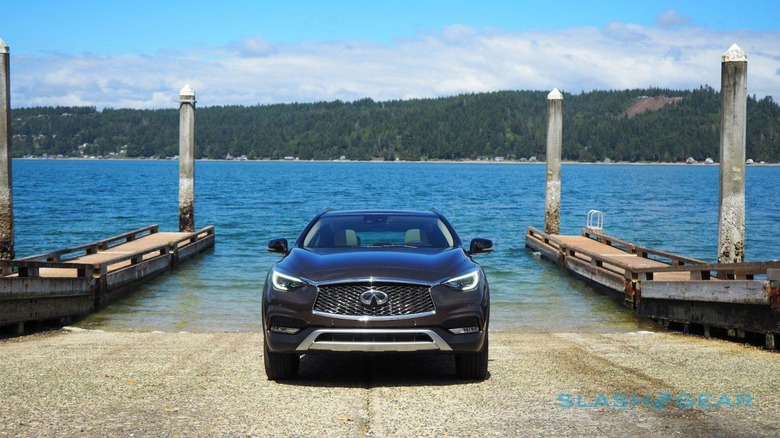
For anything close to driving zeal I'd pick the BMW, but that's an expensive indulgence. Really, though, that the QX30 is even getting mentioned in the same breath as such hallowed competition is an achievement; the fact that, for rewarding the driver, it bests the GLA it shares its DNA with is a coup de grâce worth trumpeting.


